The 1963 book “Robots and Electronic Brains” (by Robert Scharff) from the “How and Why Wonder Books” series is an early children’s book about computers. Let’s look at some of the interesting contents – and how the German translation “Was ist was: Roboter und Elektronengehirne” from 1967 changed some details.

Historical Context of the Books
Published in 1963, this might very well be one of the first children’s books on computers ever. To put this into context, this was:
- less than 20 years after the first workable computers
- four years after the introduction of the IBM 1401, one of the first commercial computers based on transistors (as opposed to tubes), weighing five tons and with programs on punch cards
- six years before the moon landings
With this context, the somewhat weird title “Robots and Electronic Brains” might be more understandable:
- Computers are called “electronic brains”, since “computers” might not have been a common enough term (especially for children!) at the time.
- Even though the book is mostly about computers, “robots” are mentioned first in the title, because they are a familiar concept. Robots like “Robby” (“Forbidden Planet”, 1956) were part of the pop culture.
While the original German version went with a literal translation, later editions updated the title to “Computer und Roboter” – computers and robots. They kept updating it until 1999, but it’s now out of print.
Differences in the German Version
The German translation was done by Käte und Heinrich Hart. While the book retains the same chapters and the identical layout, the text was slightly adapted. Here are some examples:
Who invented computers?
This question has no easy answer, as both versions correctly state. Yet the original version claims it’s an American invention – this part has been removed from the German version.
| English | German (translated back) | German |
|---|---|---|
|
The electronic computer, among the foremost American inventions of this century, was not an overnight discovery. It is the fruit of the practical science of mathematics and has its roots far in the past. |
Electronic computing systems, one of the most significant technical achievements of this century, were not accidental inventions. They are the result of developed modern technology and applied mathematical science. The origin of mathematics lies far in the past. |
Die elektronischen Rechenanlagen, eine der bedeutendsten technischen Leistungen dieses Jahrhunderts, waren keine Zufallserfindungen. Sie sind das Ergebnis der entwickelten modernen Technik und der angewandten mathematischen Wissenschaft. Der Ursprung der Mathematik liegt weit in der Vergangenheit. |
The translation also adds an explicit credit to the German Leibniz for his calculator:
| English | German (translated back) | German |
|---|---|---|
|
The first adding machine, invented in 1642, was followed by a four-operation arithmetic machine composed of a difference engine that performed calculations, a mechanical tabulator, a punch-paper control system, and a differential analyzer. Although these inventions increased computation speeds, they failed to fulfill the needs of our complex world. |
The first simple adding machine was invented in 1642, the first calculating machine for all four basic arithmetic operations around 1672 by the German philosopher and mathematician Leibniz. |
Die erste einfache Addiermaschine wurde im Jahre 1642 erfunden, die erste Rechenmaschine für alle vier Grundrechnungsarten um 1672 von dem deutschen Philosophen und Mathematiker Leibniz. |
The two versions of the book heavily diverge on the topic of the first “workable” computer:
| English | German (translated back) | German |
|---|---|---|
|
In 1936, a young Harvard physicist, Professor Howard Aiken, happened upon some of the writings of Dr. Babbage. Like Babbage, Dr. Aiken saw the possibility of a robot that could do the thinking of hundreds of men in a fraction of the time it took any one of them to work out routine mathematical problems. Aiken teamed up with other researchers and, by 1944, they built the first workable computer. |
An electromechanical calculator was first built in Germany in 1941 by K. Zuse. At the same time, similar types were being worked on in North America. |
Eine elektromechanische Rechenmaschine wurde zuerst im Jahre 1941 in Deutschland von K. Zuse gebaut. Zur gleichen Zeit wurde in Nordamerika an ähnlichen Typen gearbeitet. |
Some historical context from today’s perspective: There were actually several electronic or electromechanical and more or less general-purpose computers in the 1940s. The original version of the book picked the Harvard Mark I by the team around Howard Aiken as the first “workable” computer. The German adaptation replaced this with the Z3 of the German Konrad Zuse, which pre-dated the Mark I as the first programmable computer by 3 years.
To be fair to the original book, Zuse’s work had been largely unknown outside of German-speaking countries until at least the late 1970s. The talk “The Early Development of Digital Computing In Central Europe” given by Friedrich L. Bauer at the 1976 First International Research Conference on the History of Computing in Los Alamos, NM presented Zuse’s work to an international audience. Zuse himself also had a talk at the conference.
In fact, even the Colossus Mark 1 at Bletchley Park predated the Harvard Mark I (by 3 months), but the UK’s codebreakers efforts were still secret at the time the books were written – in fact, they were revealed at the very same conference in 1976.
Here is what the two versions say about ENIAC:
| English | German (translated back) | German |
|---|---|---|
|
Two years later, the first general-purpose, all-electronic computer, called the ENIAC computer (from Electric Numerical Integrator and Calculator), was built. ENIAC was the grandfather of today’s electronic brains, room-size robots who answer to the unlikely names as UNIVAC, STRETCH, MANIAC, UNICALL, MINIVAC, SEAC, and BIZMAC. |
In 1946, there was also the first real electron computer in the USA, named ENIAC (Electronic Numerical Integrator And Computer). ENIAC was, so to speak, the ancestor of today’s electron brains, the room-sized robots. Some American manufacturers give them names like UNIVAC, MANIAC, UNICALL, MINIVAC and BIZMAC; others, including the German manufacturers, refer to their various computer types only by numbers. |
1946 gab es auch in den USA den ersten wirklichen Elektronenrechner, ENIAC genannt (Electronic Numerical Integrator And Computer). ENIAC war sozusagen der Ahnherr der heutigen Elektronengehirne, der zimmergroßen Roboter. Einige amerikanische Hersteller geben ihnen Namen wie UNIVAC, MANIAC, UNICALL, MINIVAC und BIZMAC; andere, auch die deutschen Hersteller, bezeichnen ihre verschiedenen Computertypen nur mit Nummern. |
The German version downgrades ENIAC into an “also-ran”. In all fairness, ENIAC should be credited as the first working computer designed to be Turing-complete.
Finally, the German text clarifies that the UNIVAC-style naming scheme does not apply to all computers, especially non-US ones.
Does an electronic brain ever fail?
Thankfully (and surprisingly), the German version removes the sexism from the garbage-in/garbage-out chapter:
| English | German (translated back) | German |
|---|---|---|
| A computer, of course, gives wrong answers if given wrong information. One experiment with the decision-making ability of computers was a failure. A television quiz program used a computer to select the ideal wife for a contestant. To accomplish this, the programmer fed into the machine all facts known for a perfect marriage – likes and dislikes, interests in various hobbies, movies, music, food, etc. When the computer compared the qualifications of many women with those of the male contestant, it recommended one as ideal. But, when the two got to know each other, they decided they were mismatched and should not marry each other. Whose fault was this? The machine programmer’s? Perhaps it only proves that even a computer cannot understand a woman’s mind. | Of course, if a computer is fed the wrong information, it will give a wrong answer, but other attempts to use a computer’s capability can also lead to failure. Example: In a television program, a computer was used to find out the ideal wife for a certain man. The programmer gave the electronic computer all the characteristics desired for an ideal marriage – likes and dislikes, interests in various hobbies, in cultural values, and so on. After the computer compared the characteristics of many women with those of the man in question or according to his wishes, it declared a particular woman to be the ideal partner. But when the two got to know each other, it turned out that they did not like each other. Whose fault was that? The programmer’s? Perhaps the experiment only proves that the human heart and its inclinations are not calculable. | Natürlich gibt ein Computer, wenn er mit falschen Angaben gefüttert wurde, eine falsche Antwort. Aber auch andere Versuche, die Fähigkeit eines Computers zu nutzen, können zum Mißerfolg führen. Ein Beispiel: In einem Fernsehprogramm wurde ein Computer dazu benutzt, jeweils für einen bestimmten Mann die ideale Ehefrau herauszufinden. Der Programmierer gab dem Elektronenrechner alle für eine ideale Ehe gewünschten Eigenschaften auf – Neigungen und Abneigungen, Interessen an verschiedenen Hobbies, an kulturellen Werten usw. Nachdem der Computer die Eigenschaften vieler Frauen mit denen des betreffenden Mannes oder gemäß dessen Wünschen verglichen hatte, erklärte er eine bestimmte Frau zur idealen Partnerin. Aber als die beiden dann einander kennenlernten, stellte sich heraus, daß sie sich nicht sympathisch waren. Wessen Fehler war das? Des Programmierers? Vielleicht beweist der Versuch nur, daß das menschliche Herz und seine Neigung nicht berechenbar ist. |
Complete Comparison
Here are both books side by side. If you find any more interesting details (or differences), please add them in the comments of this article!
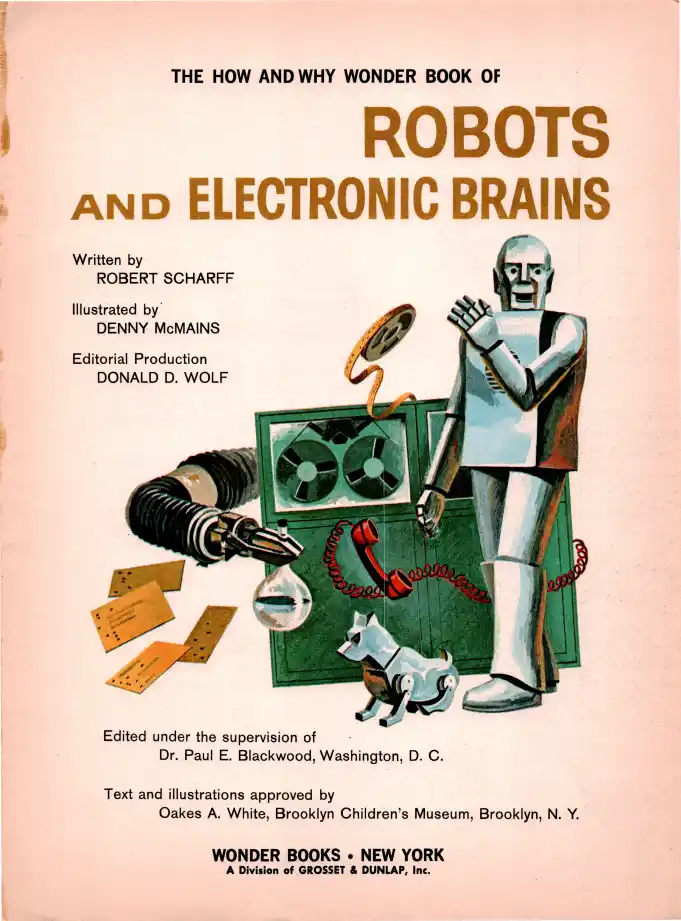
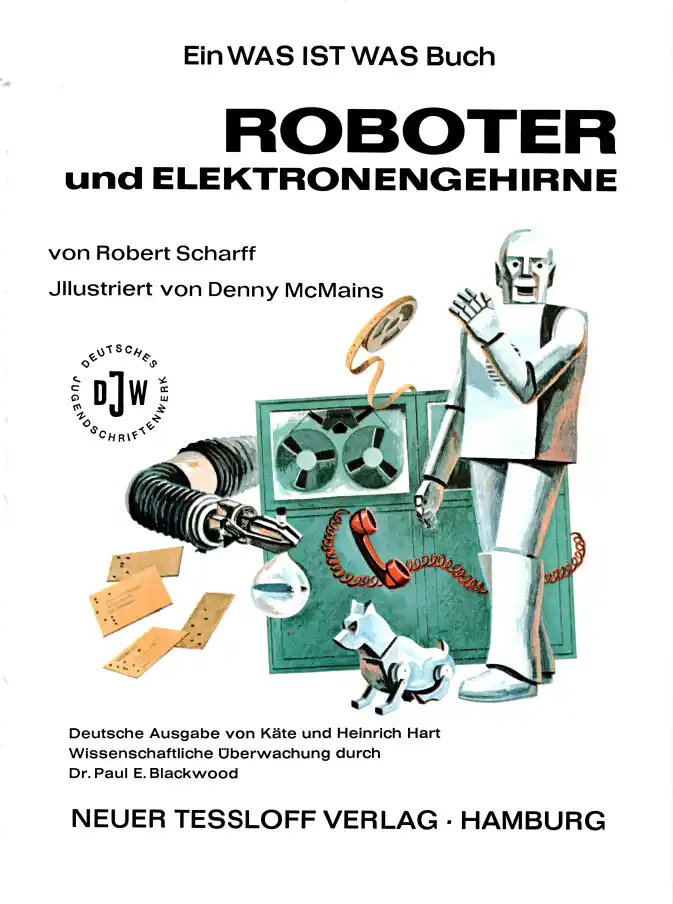
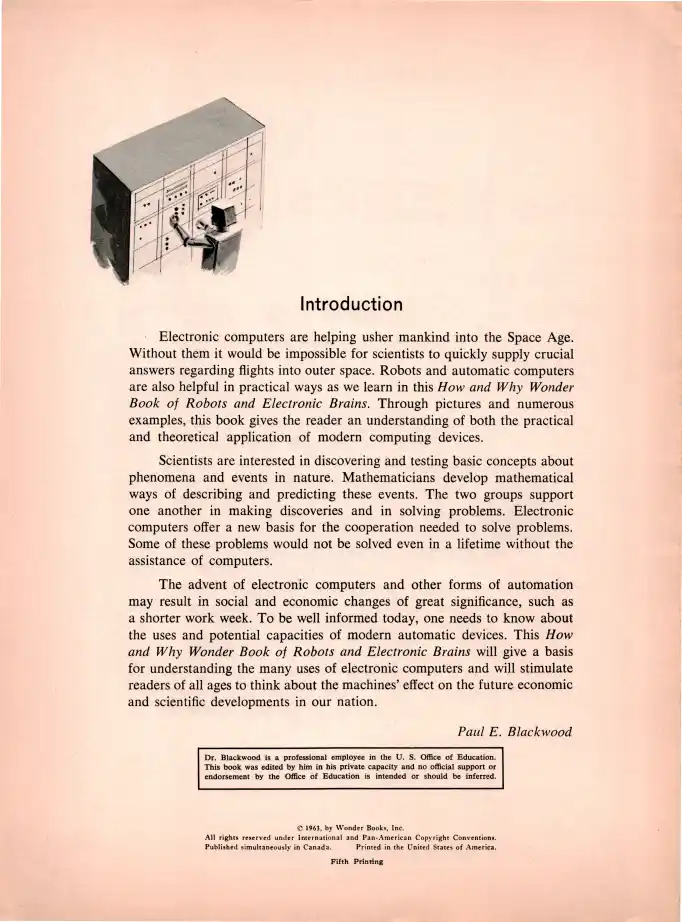
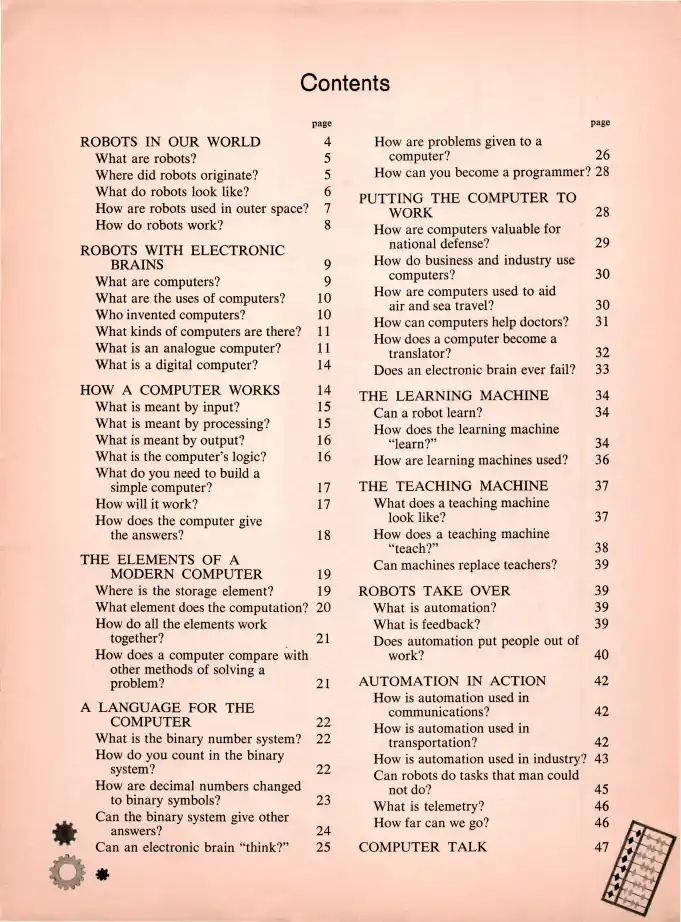
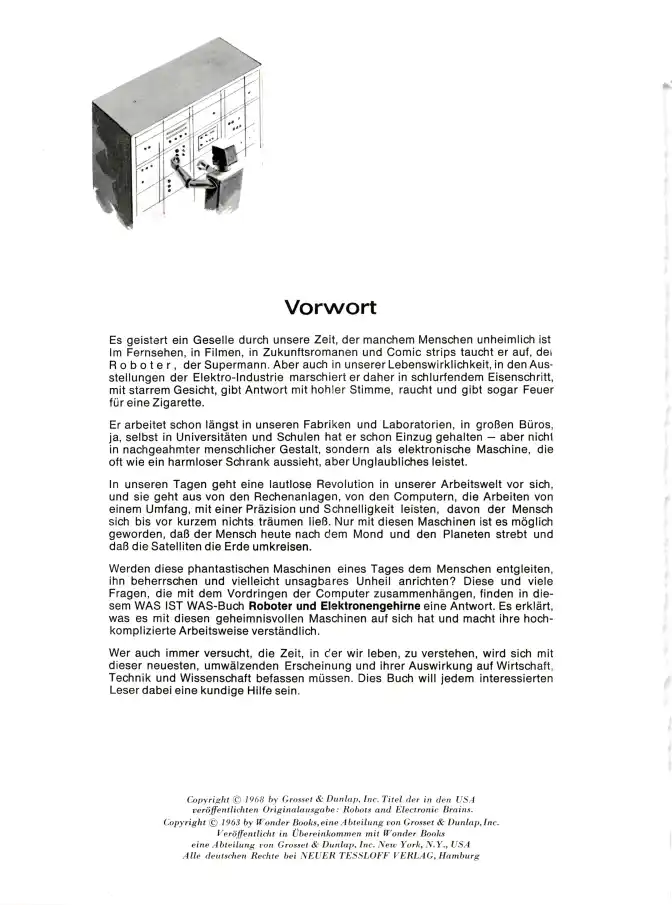
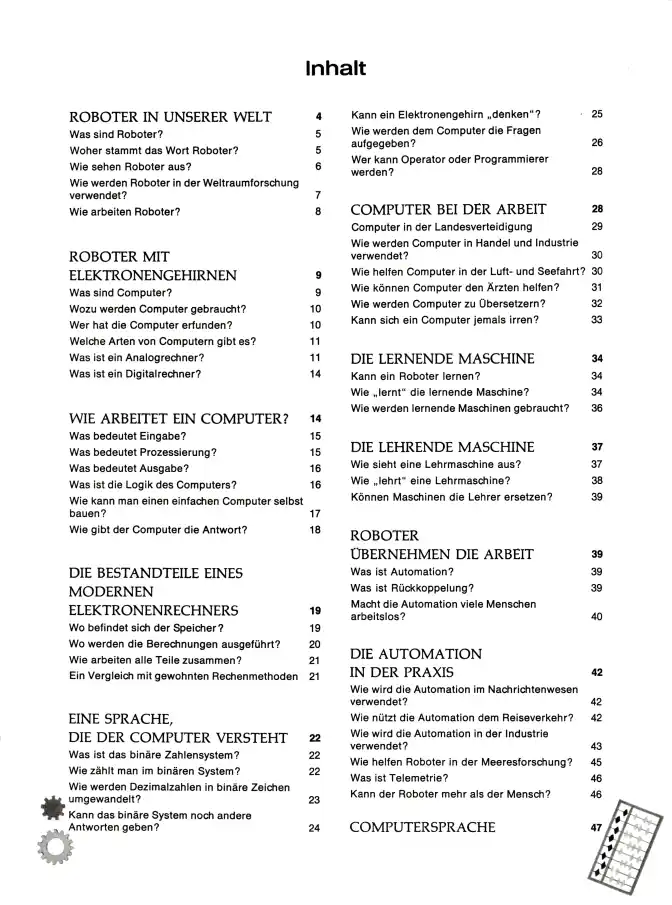
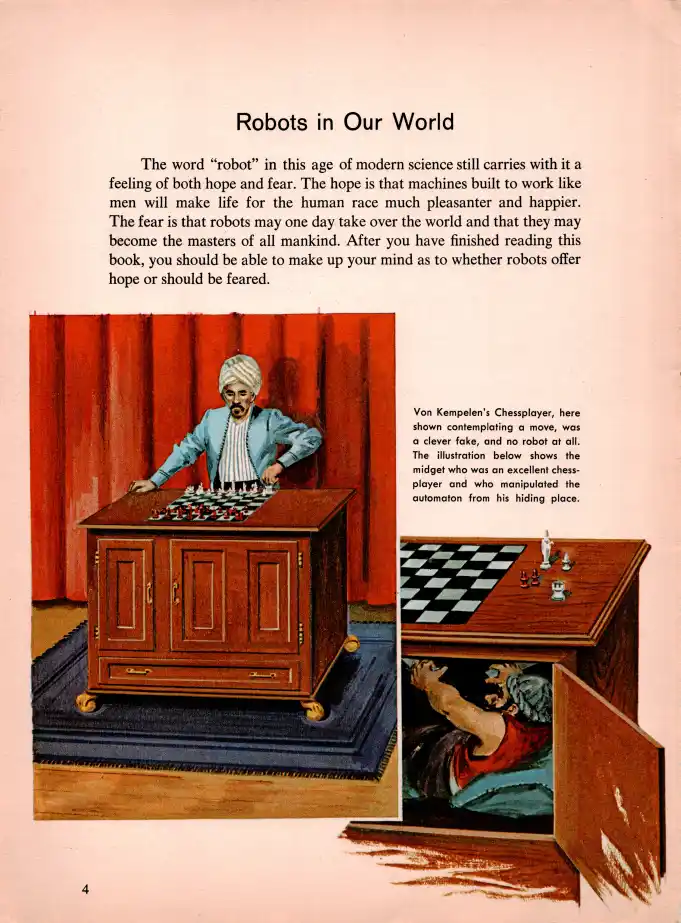

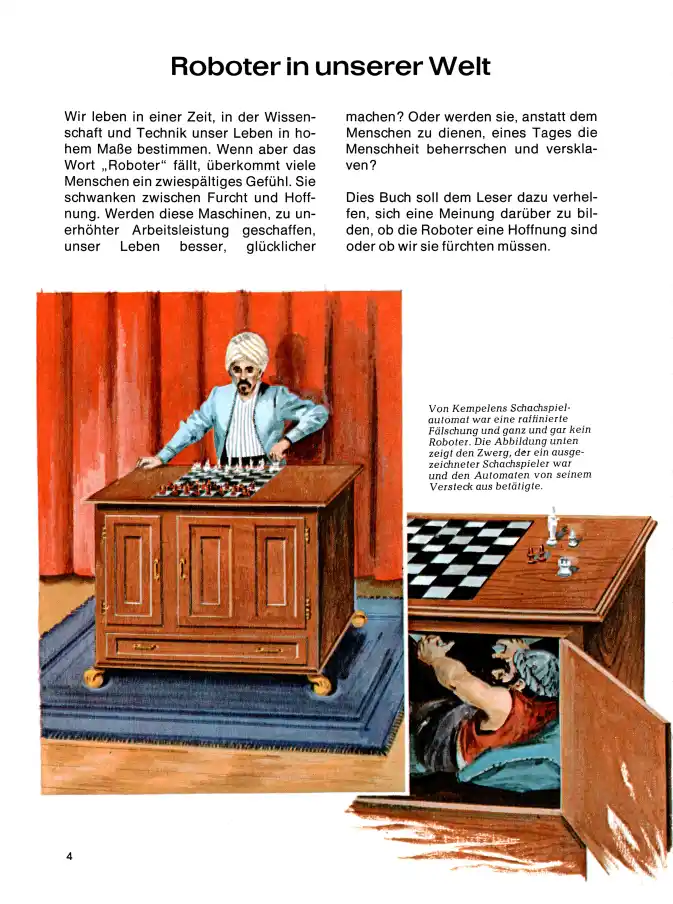
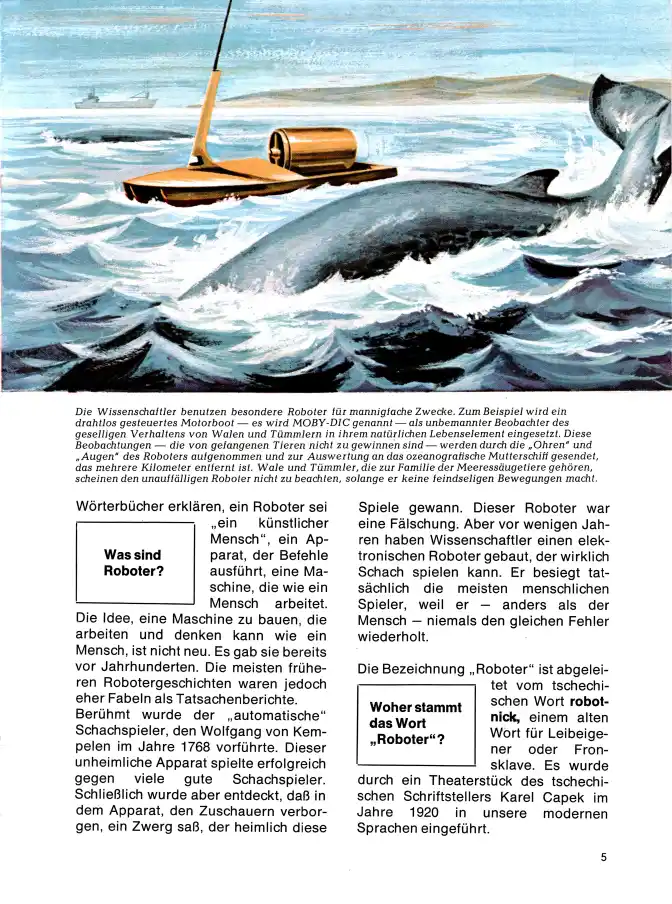
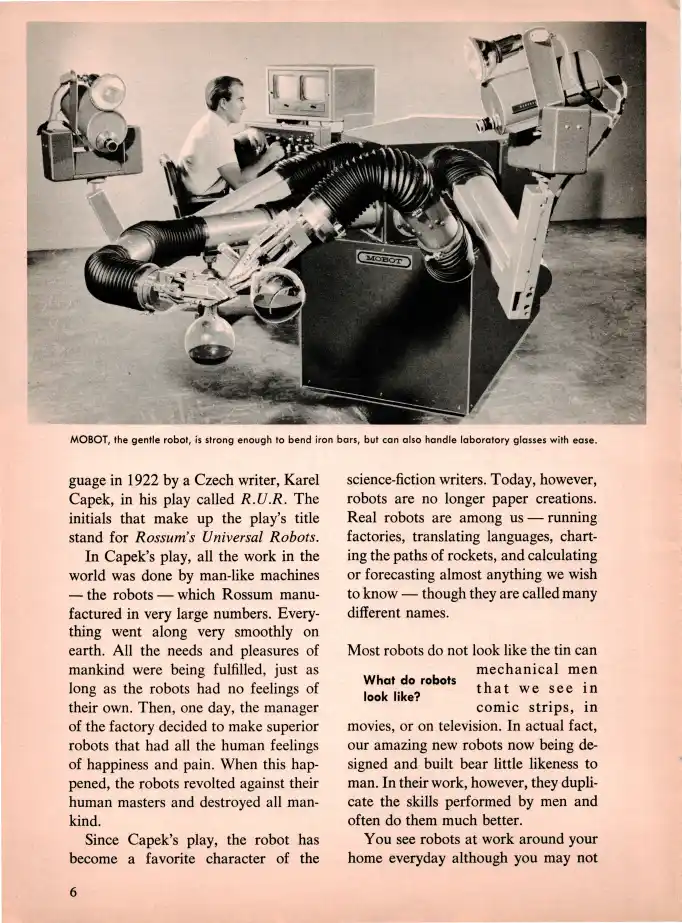
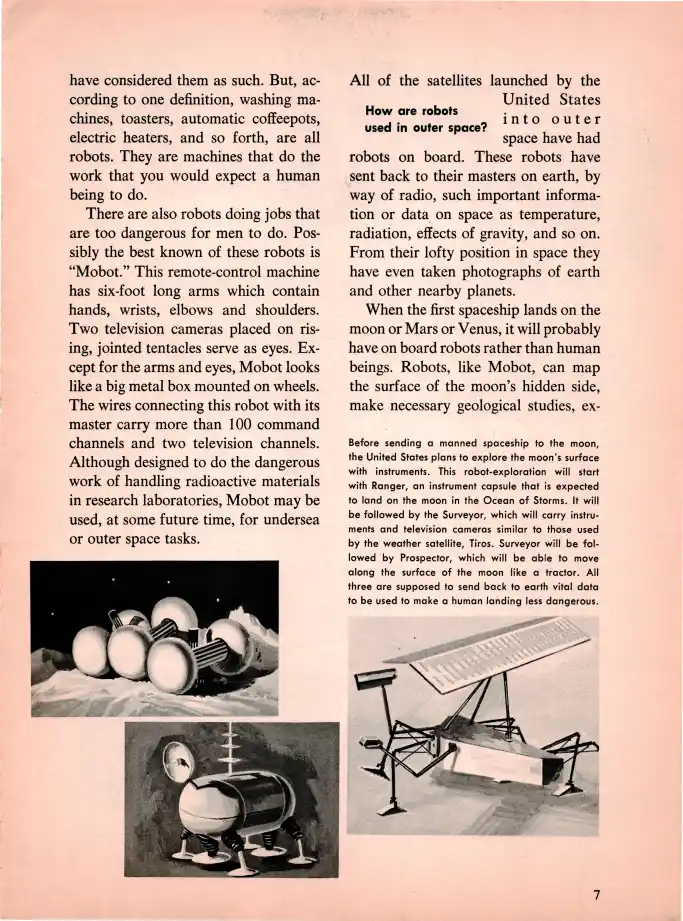
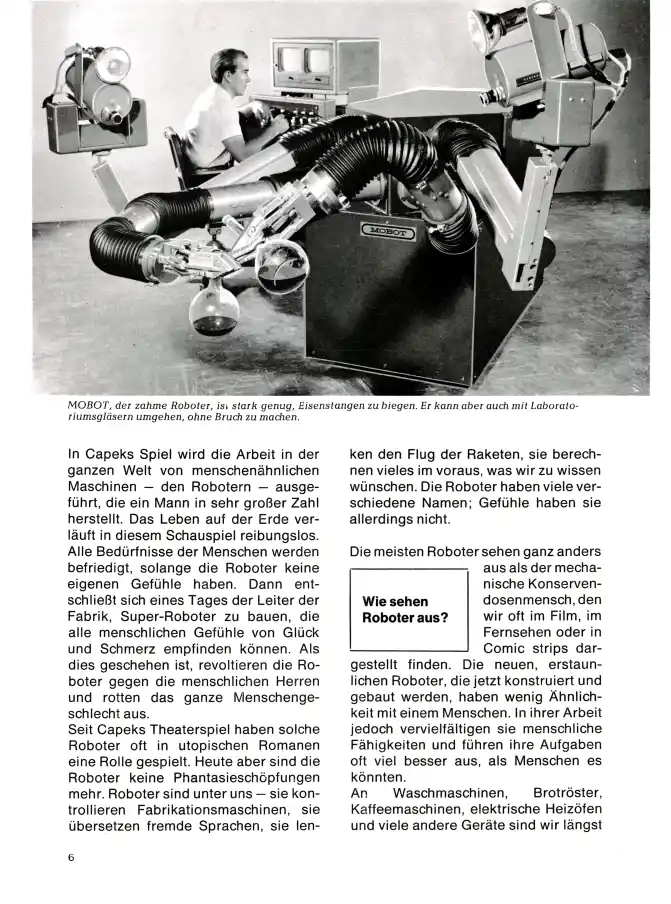

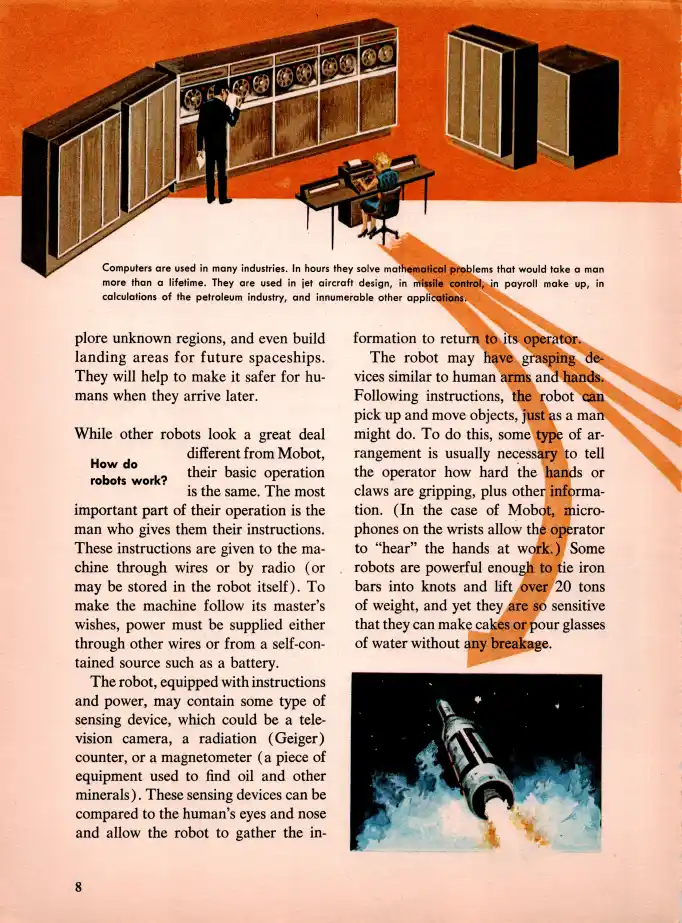
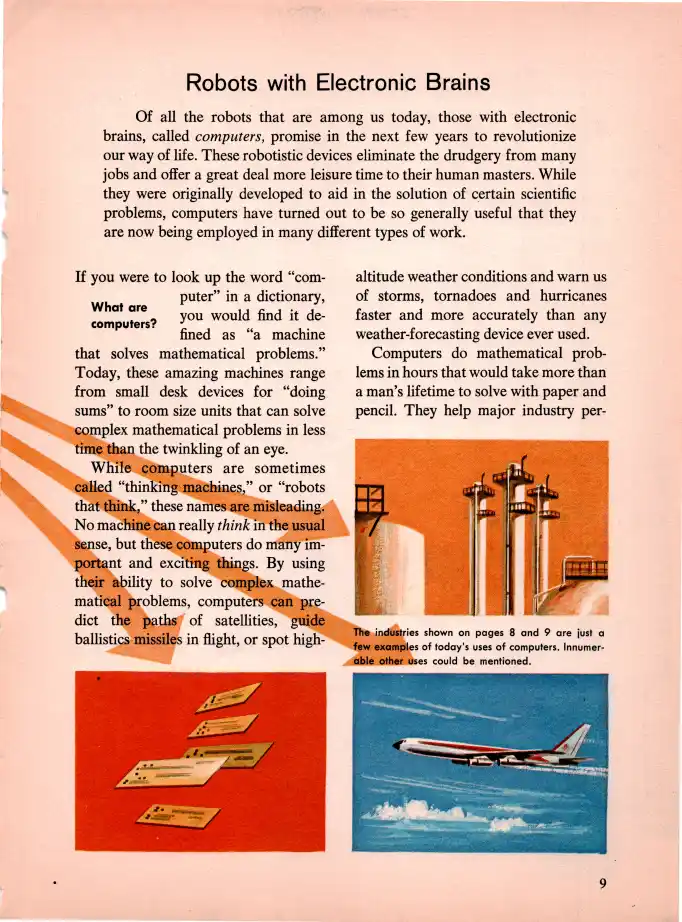
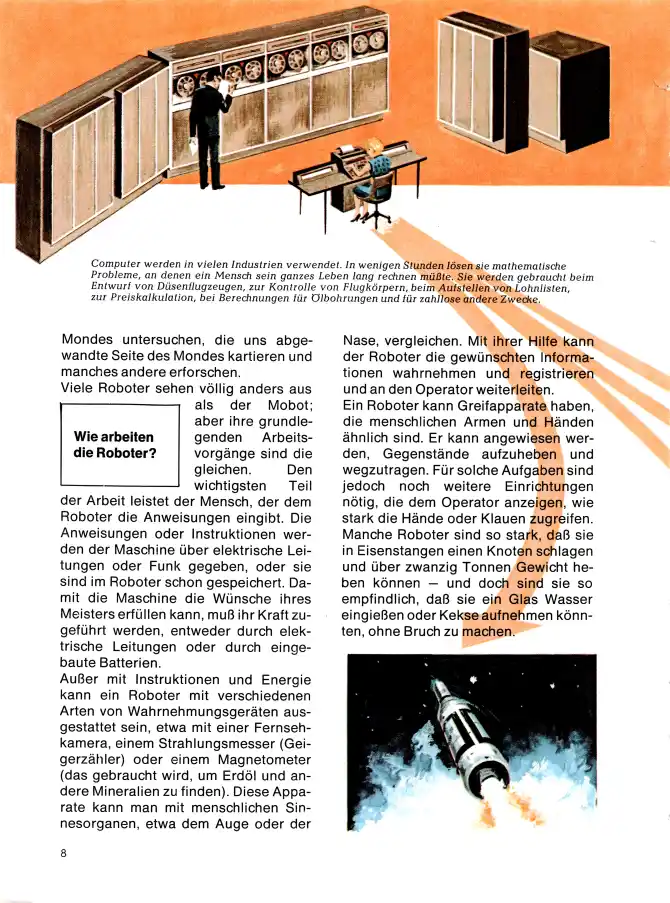
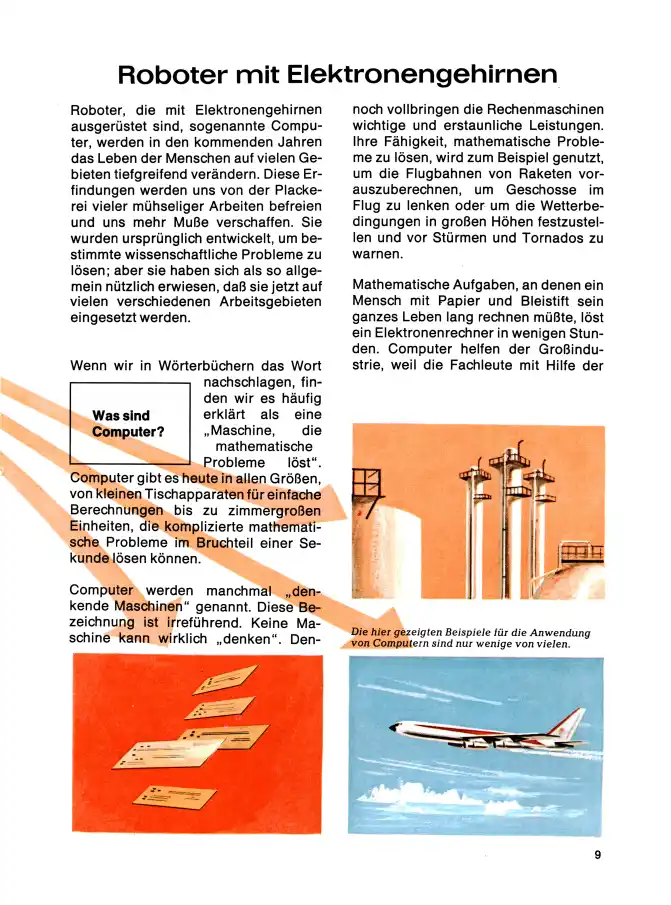
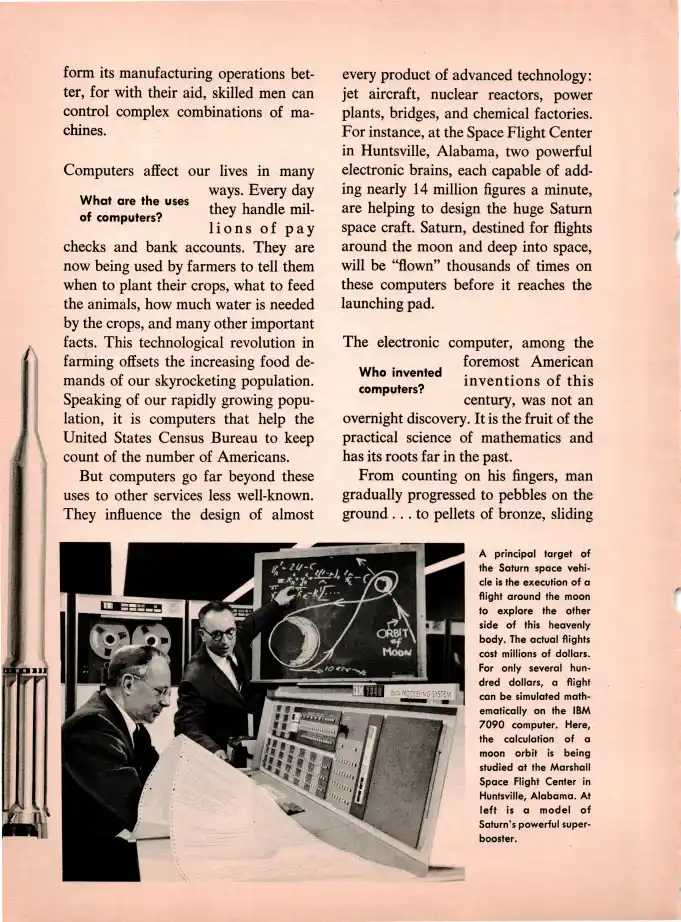
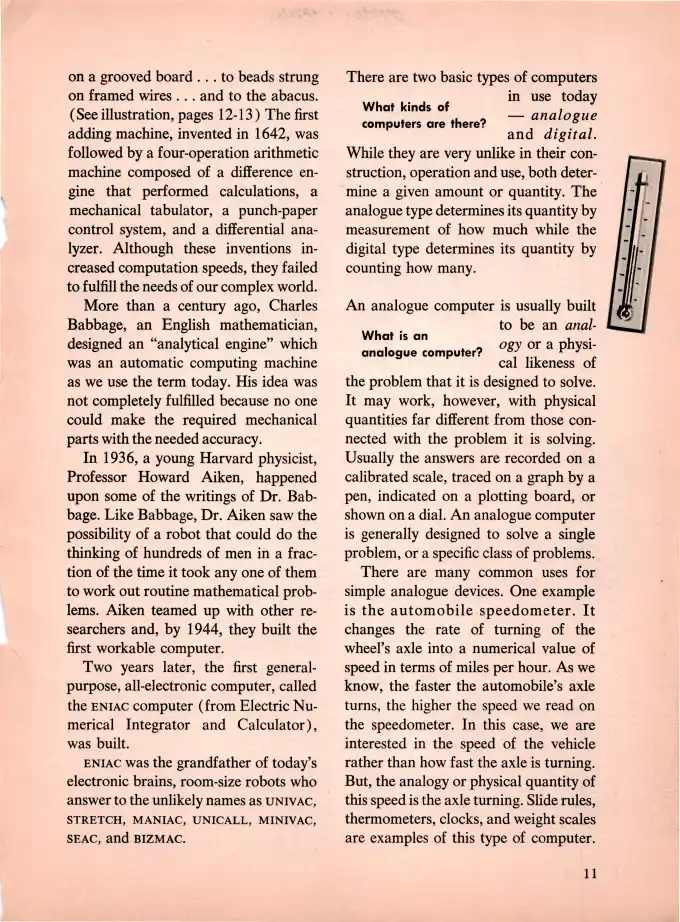
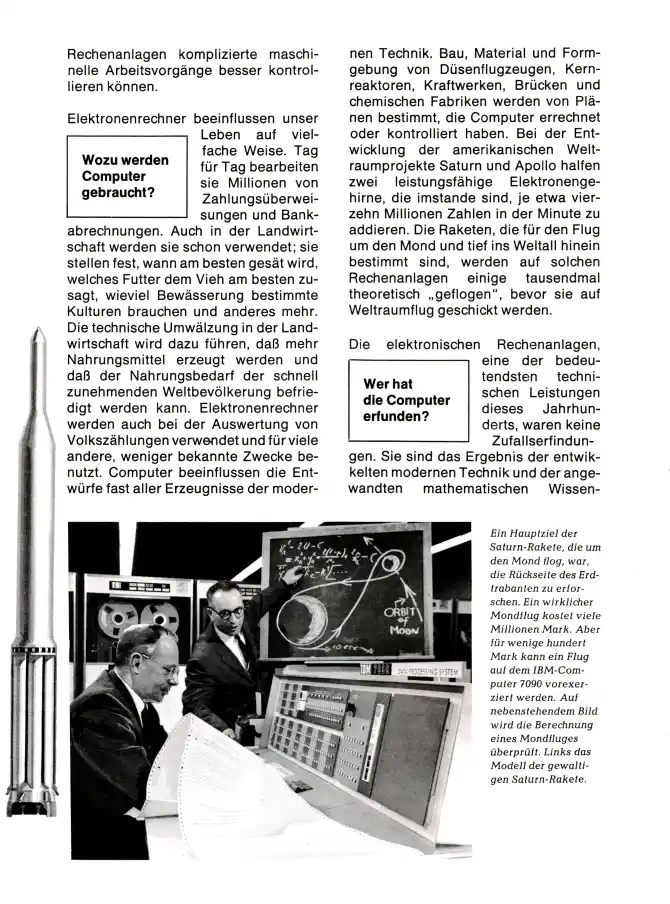
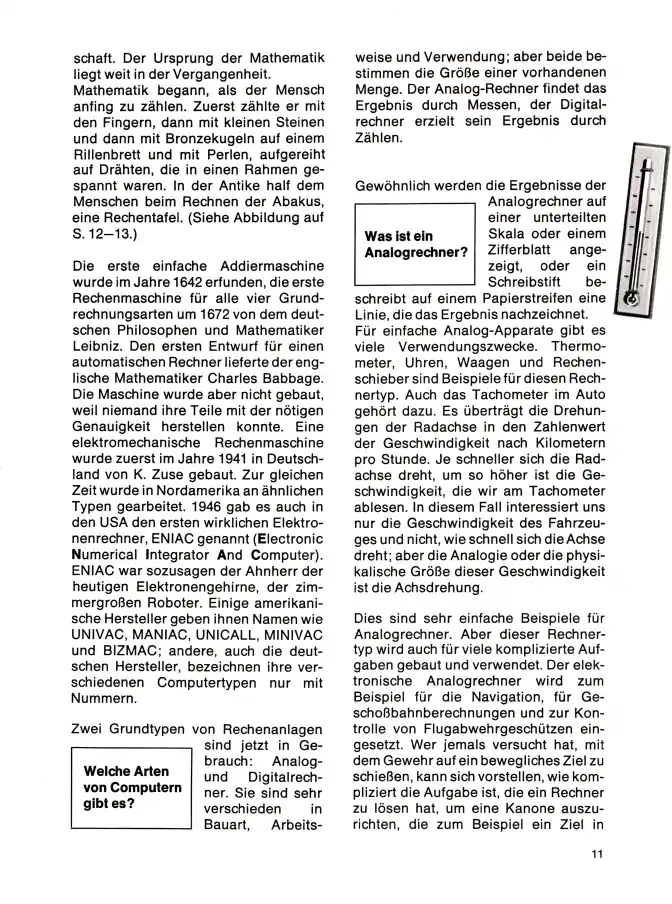
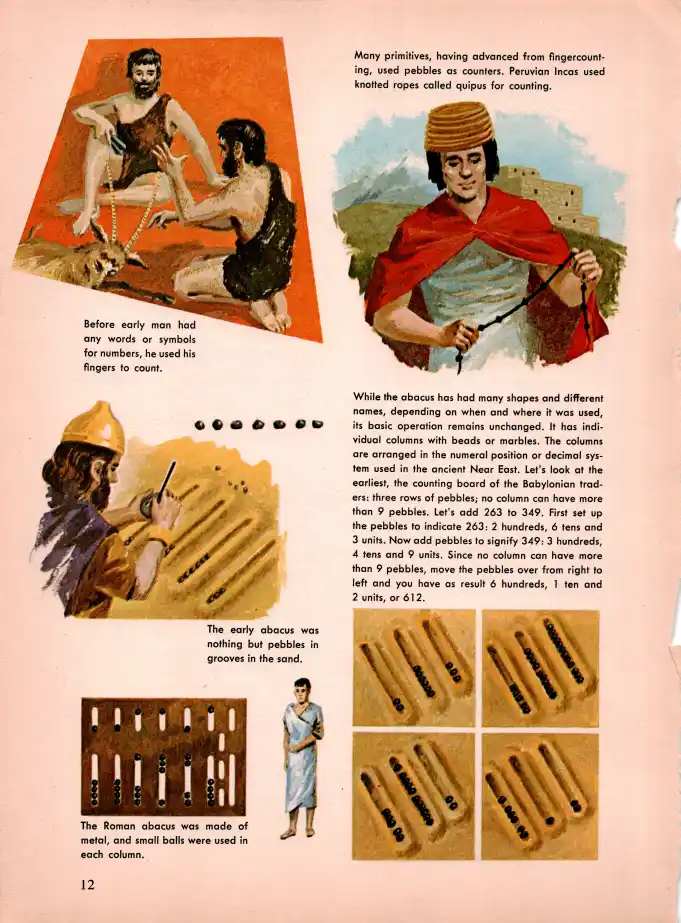
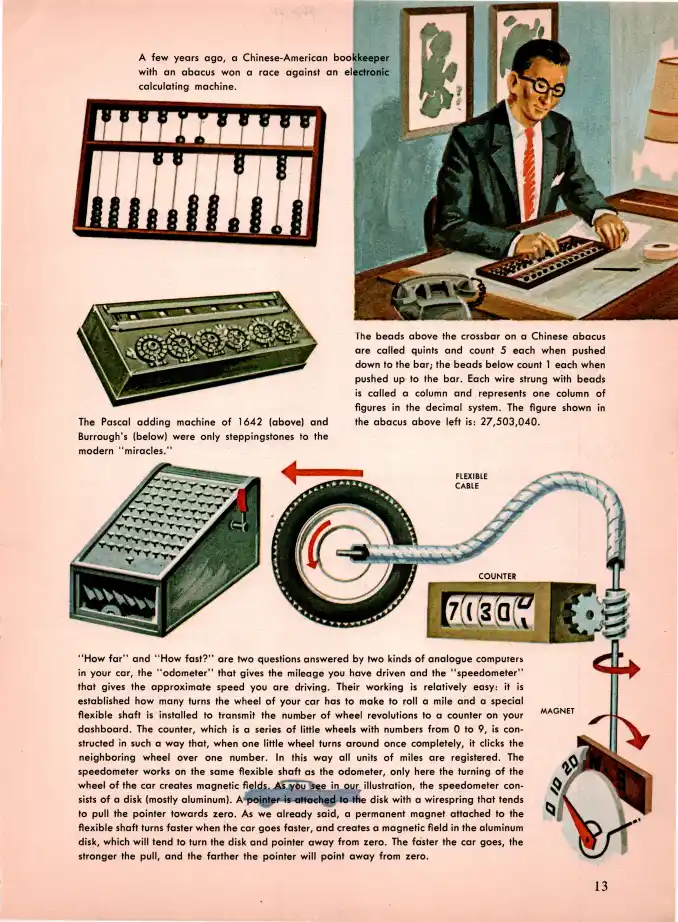

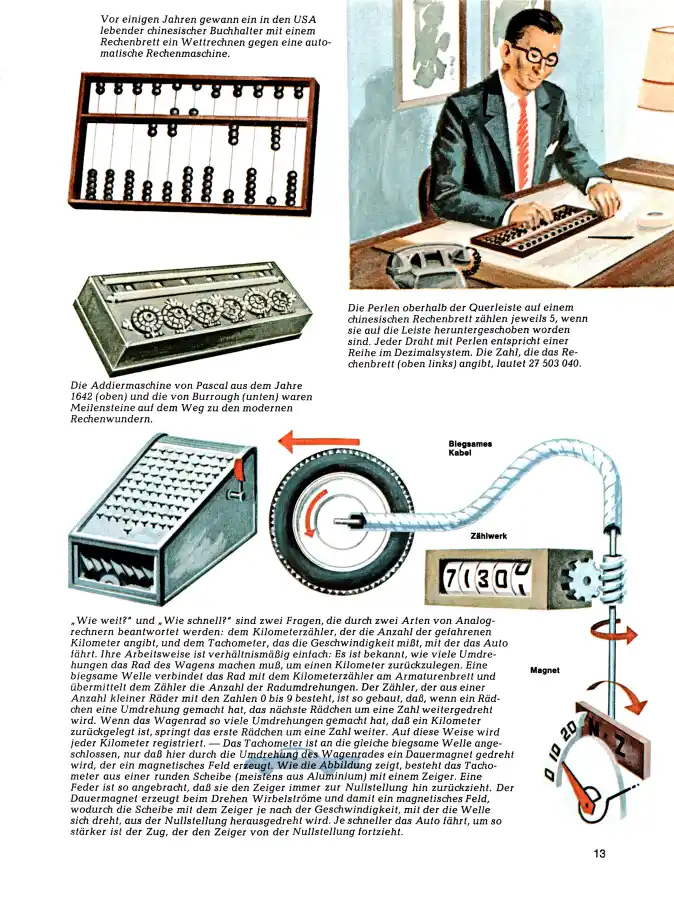
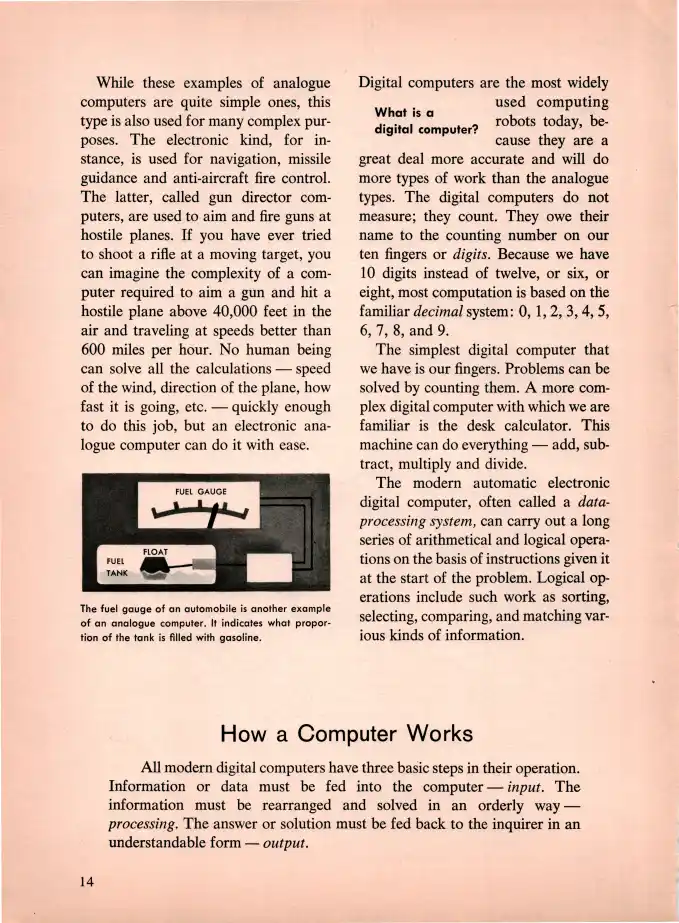
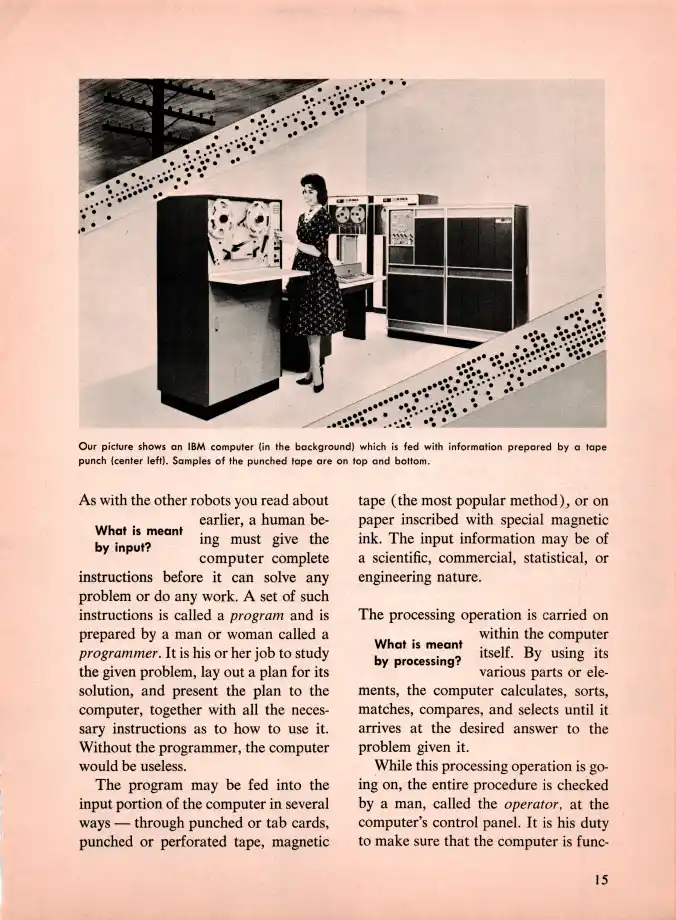
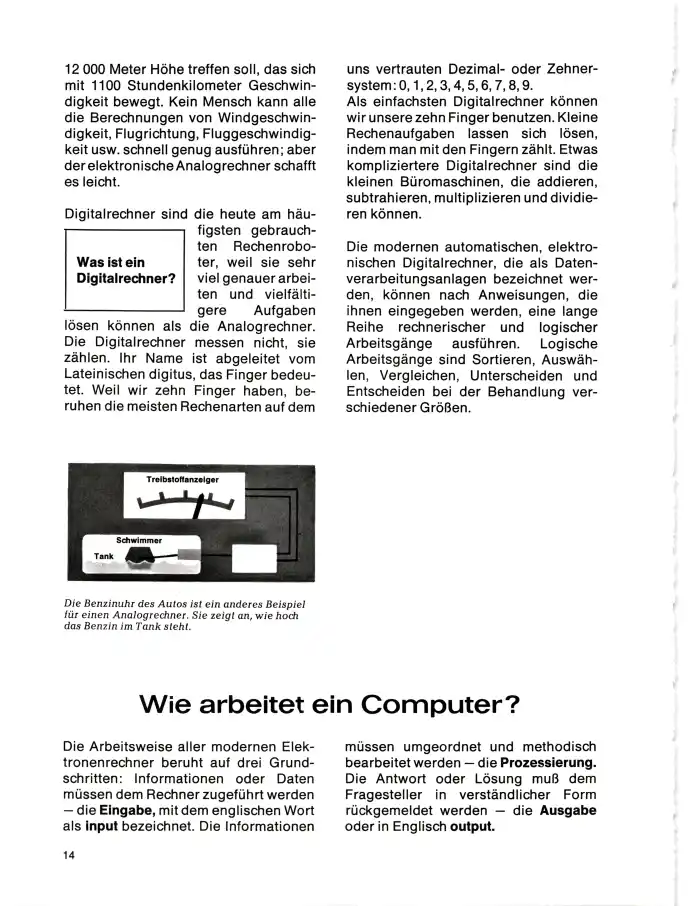
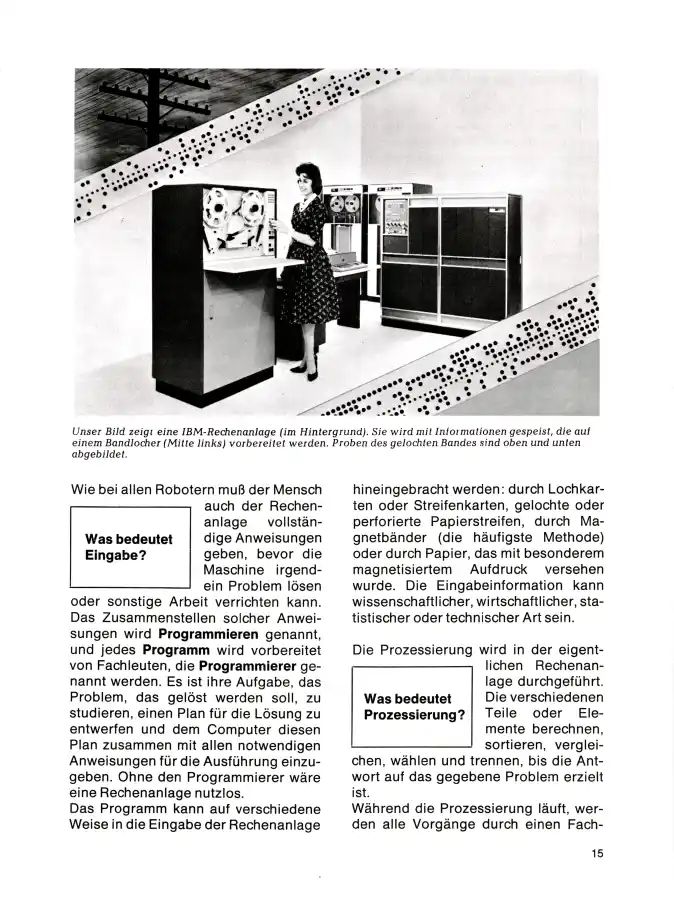
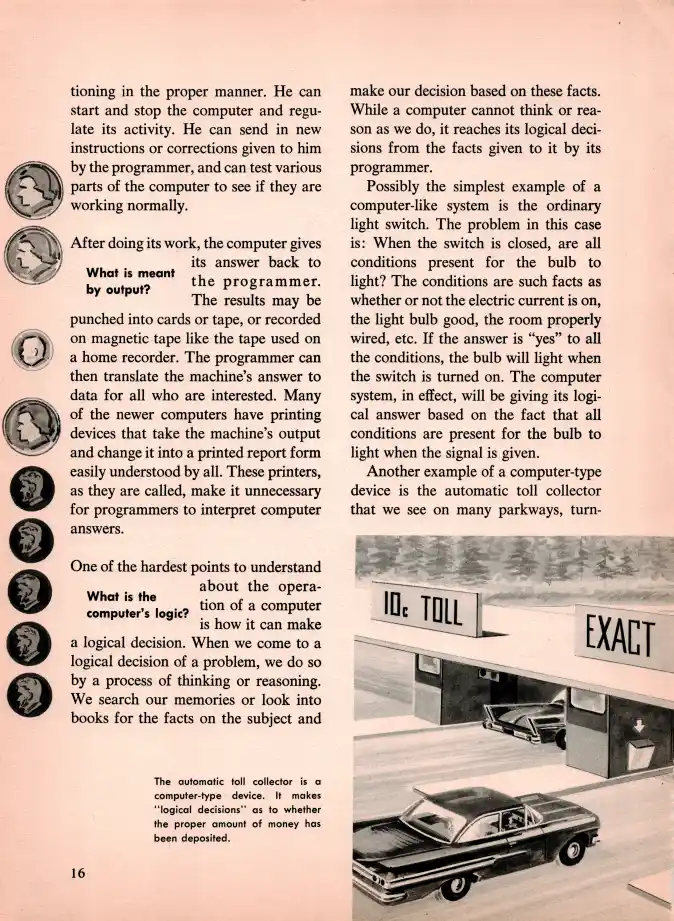
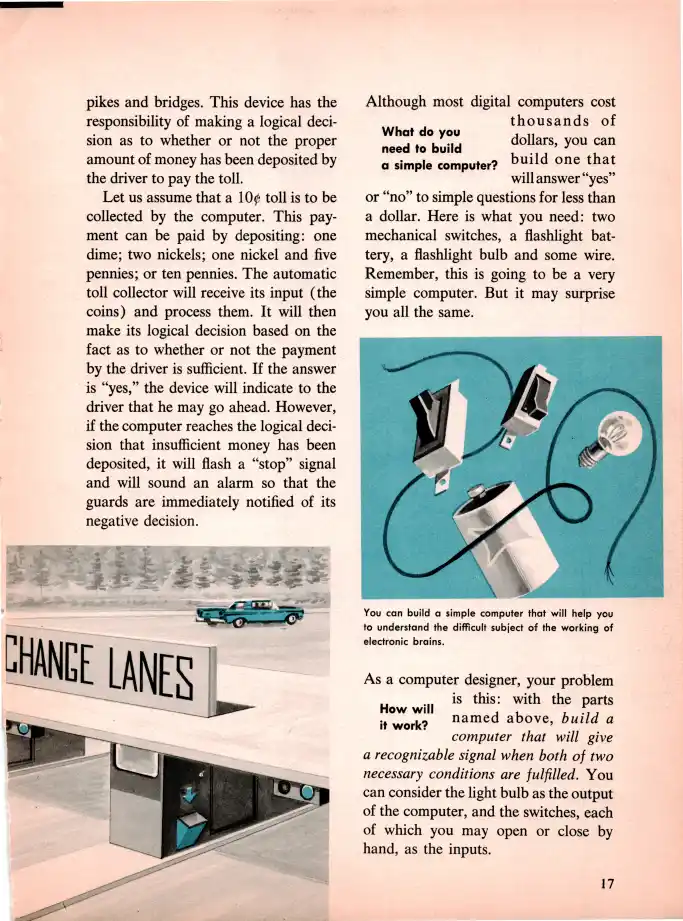
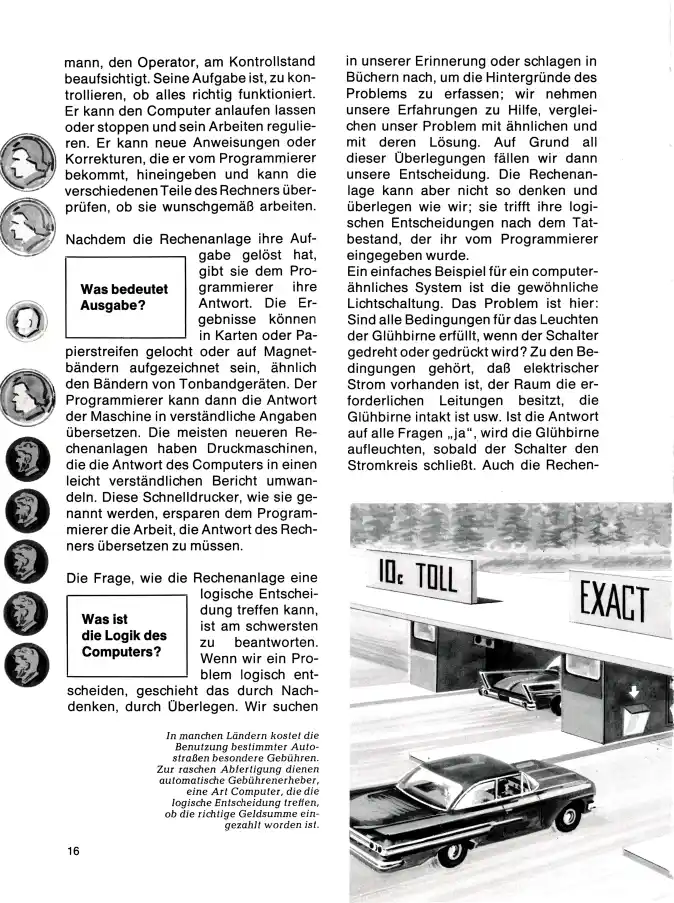

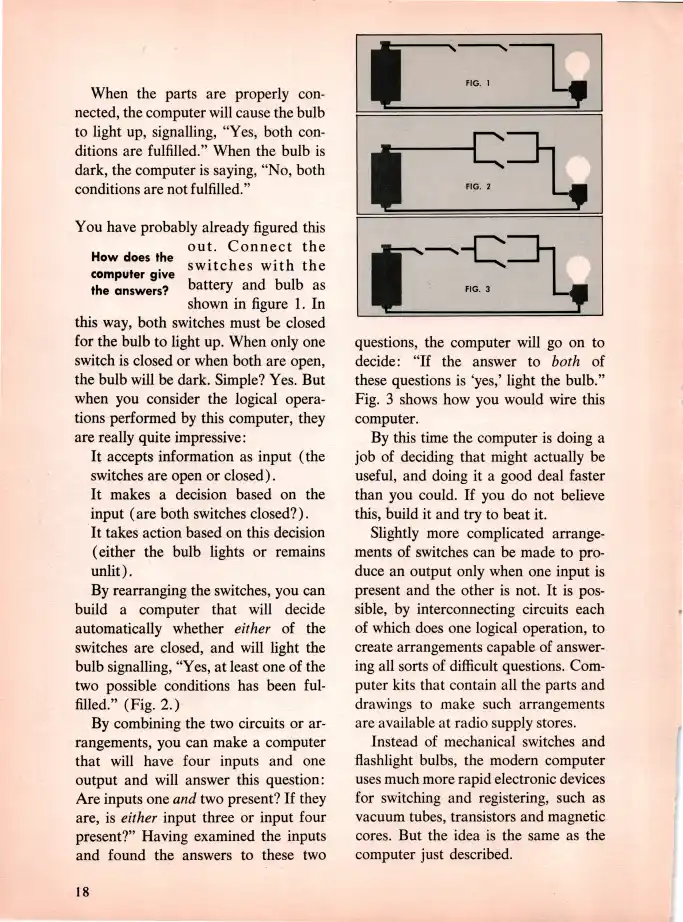
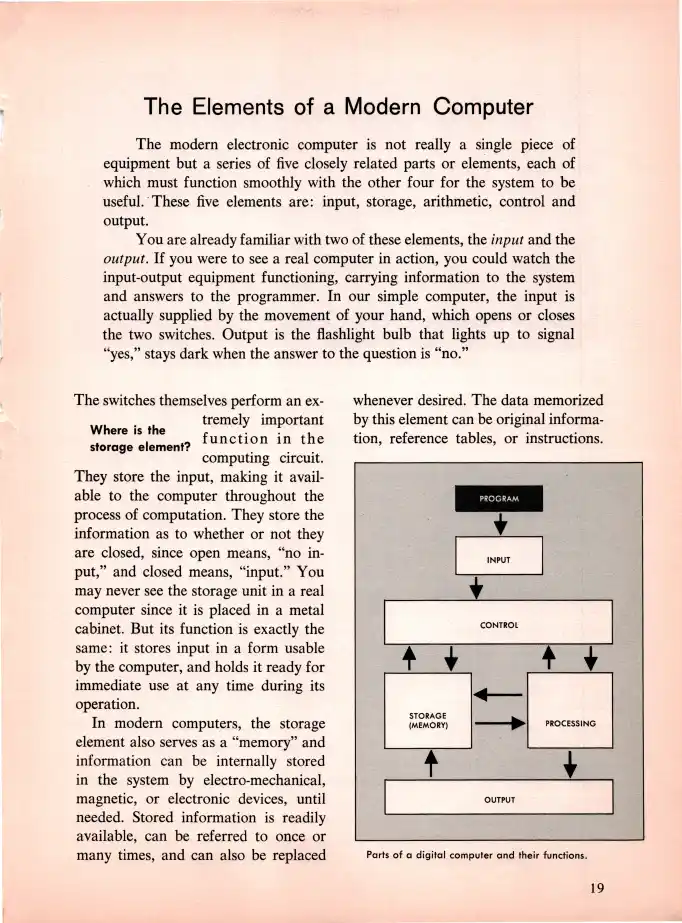
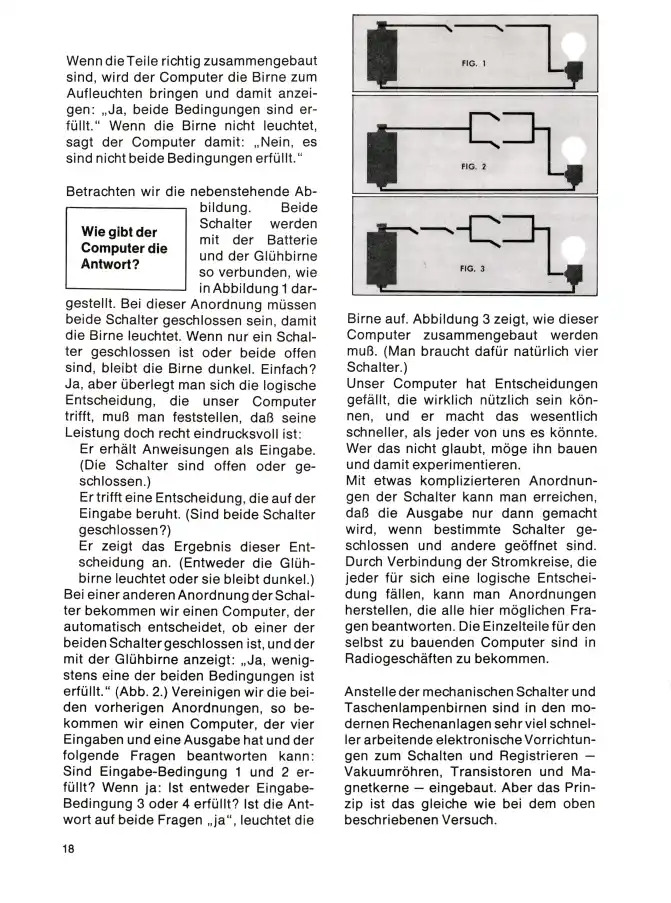
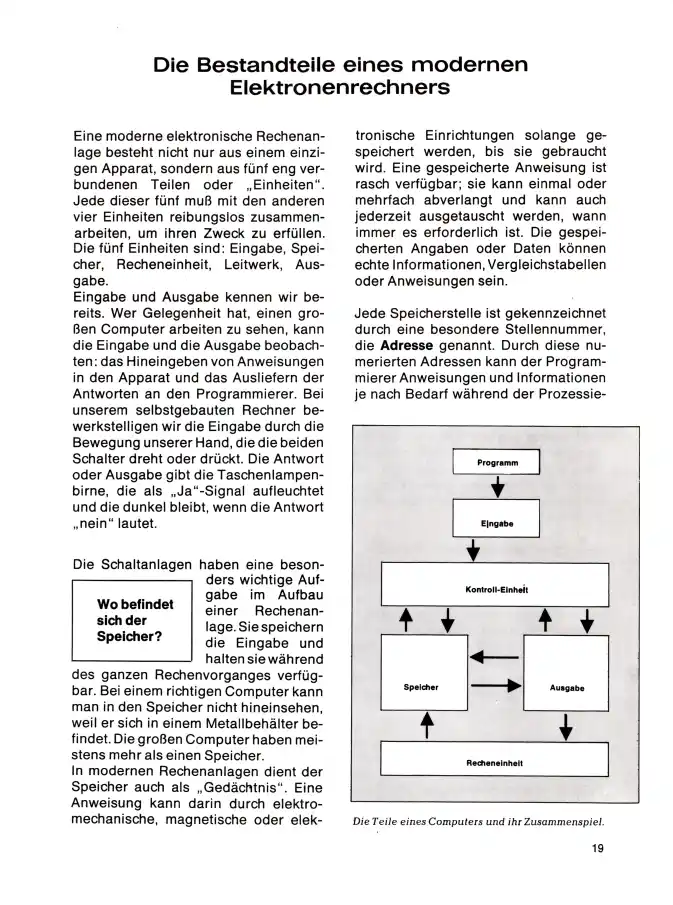
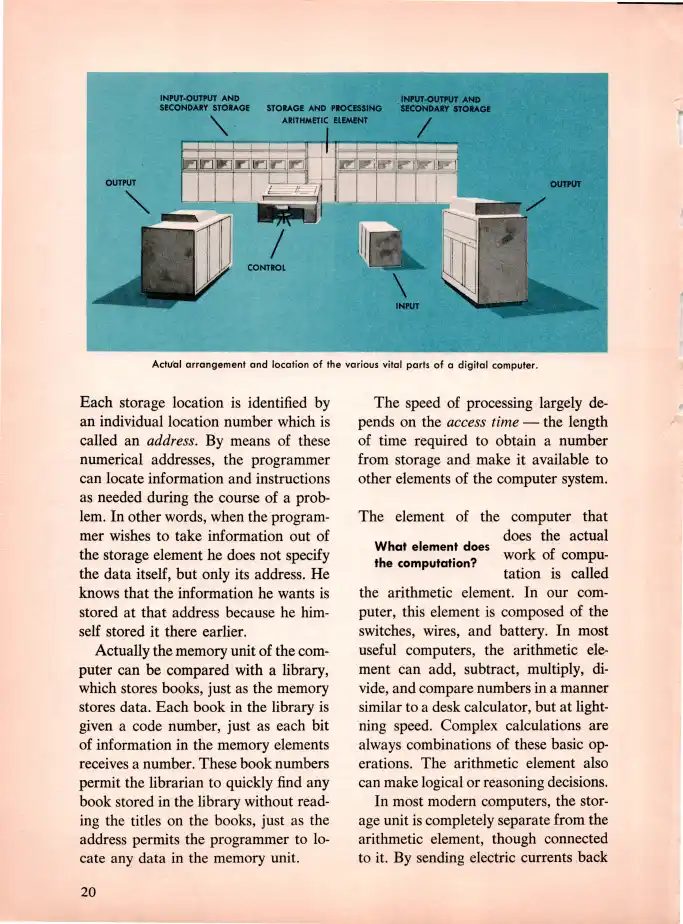
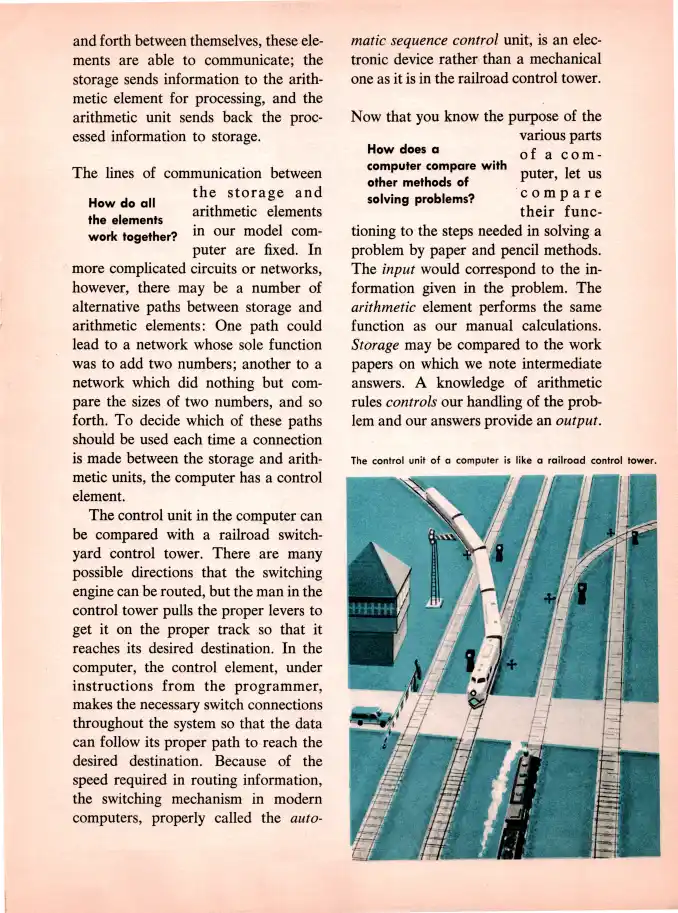
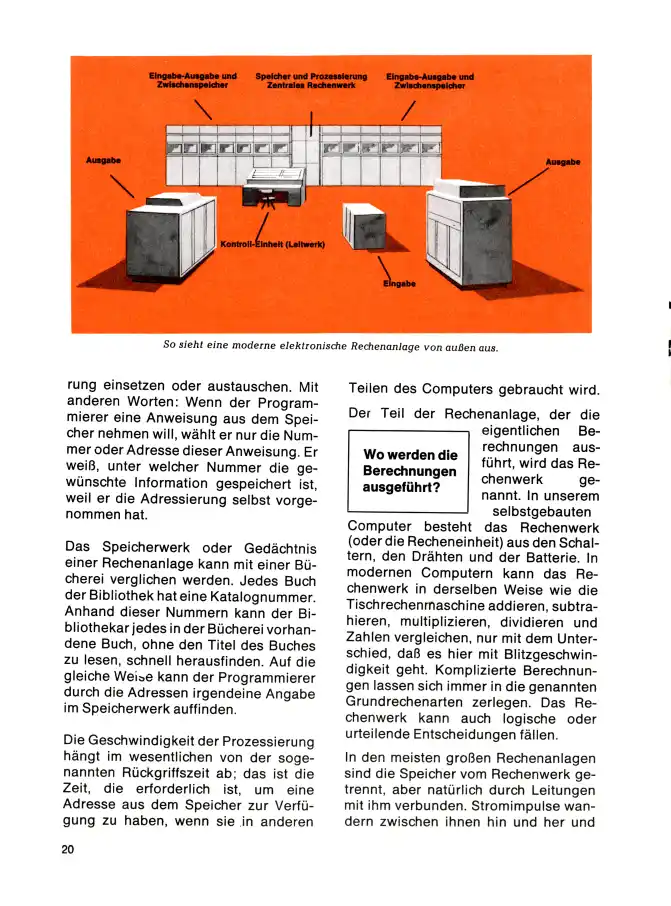
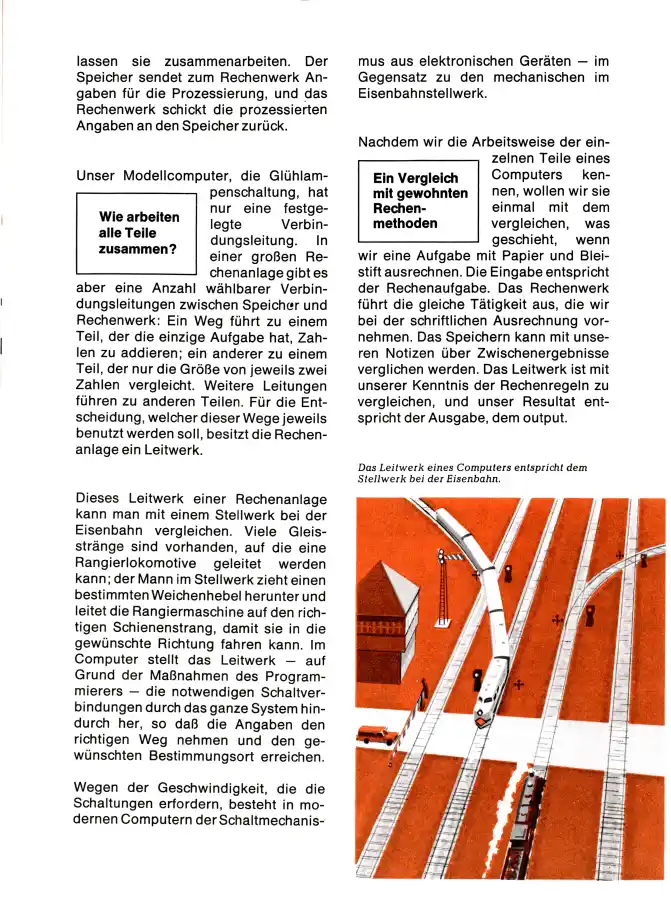
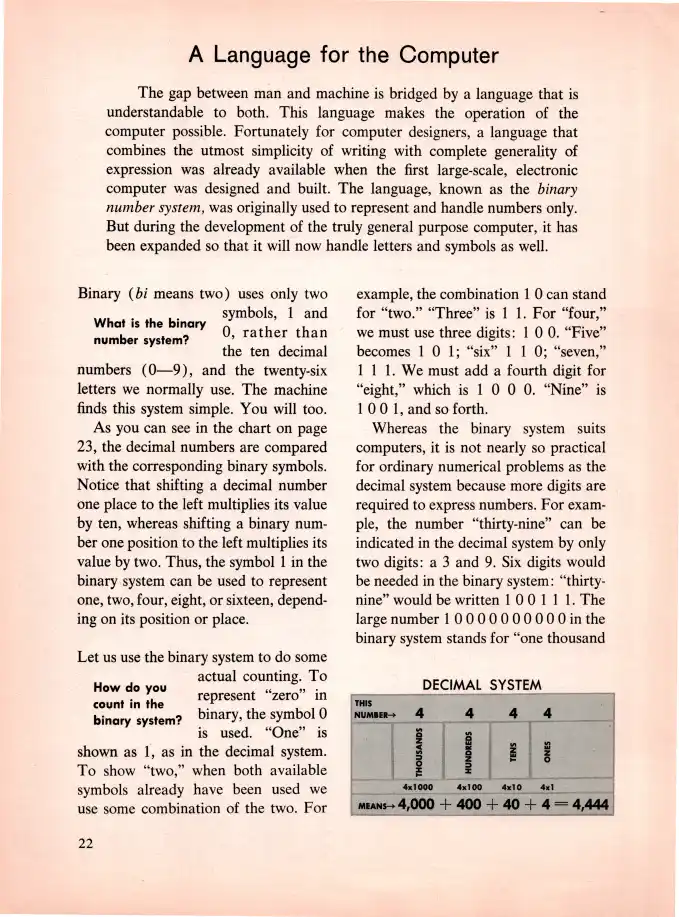
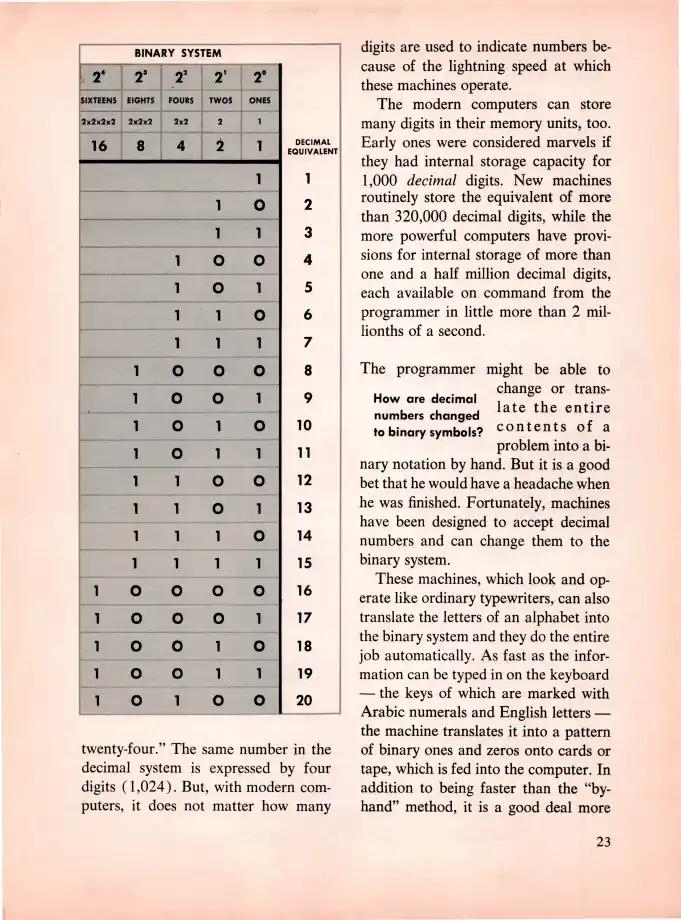
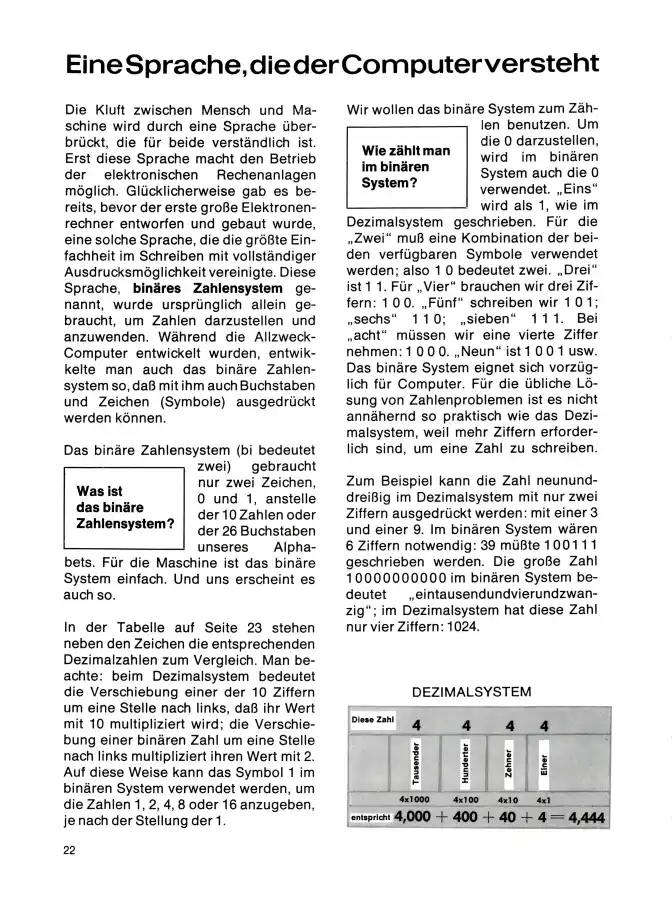
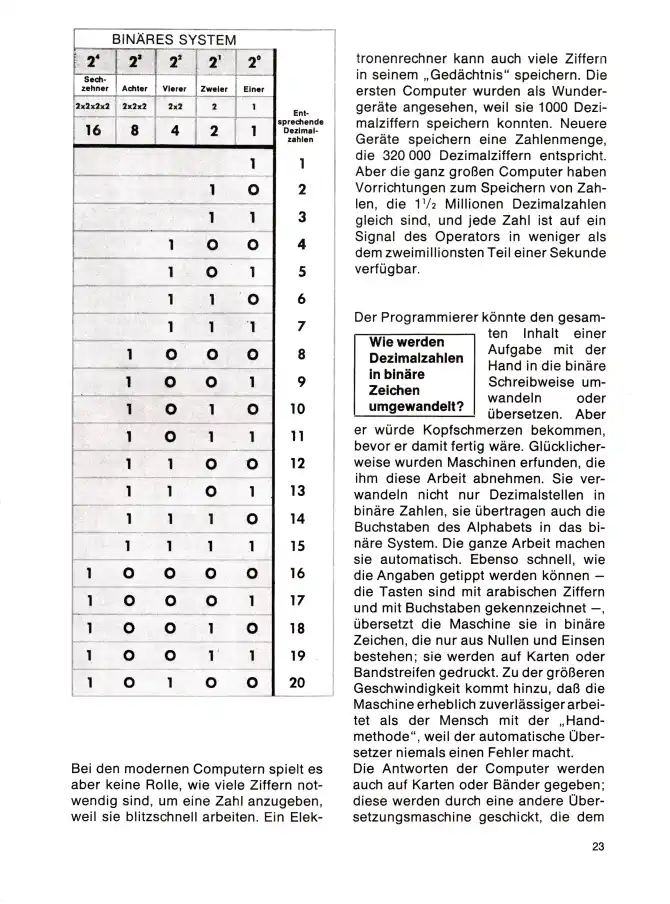
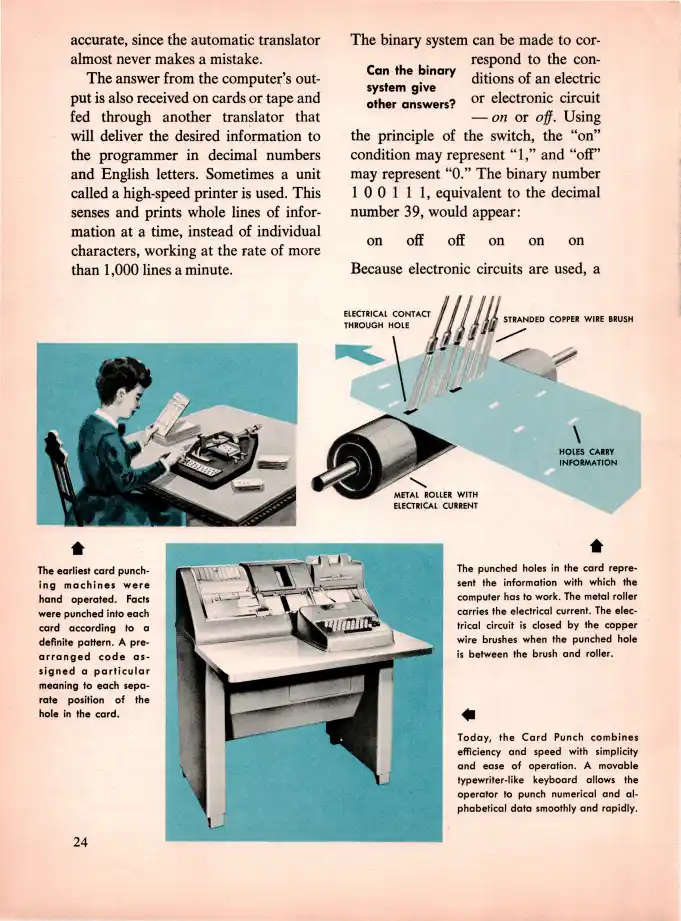
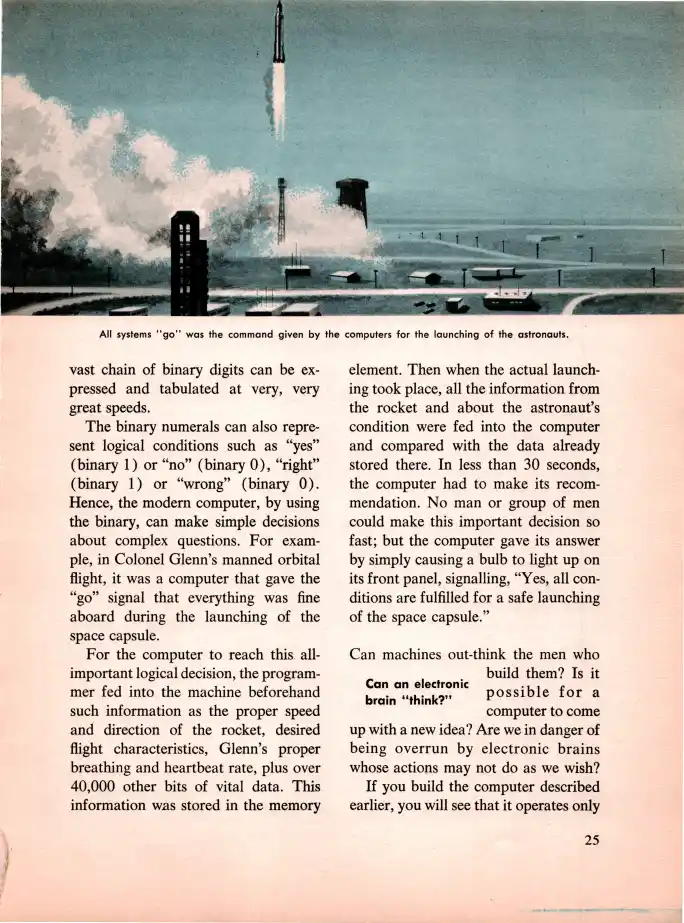
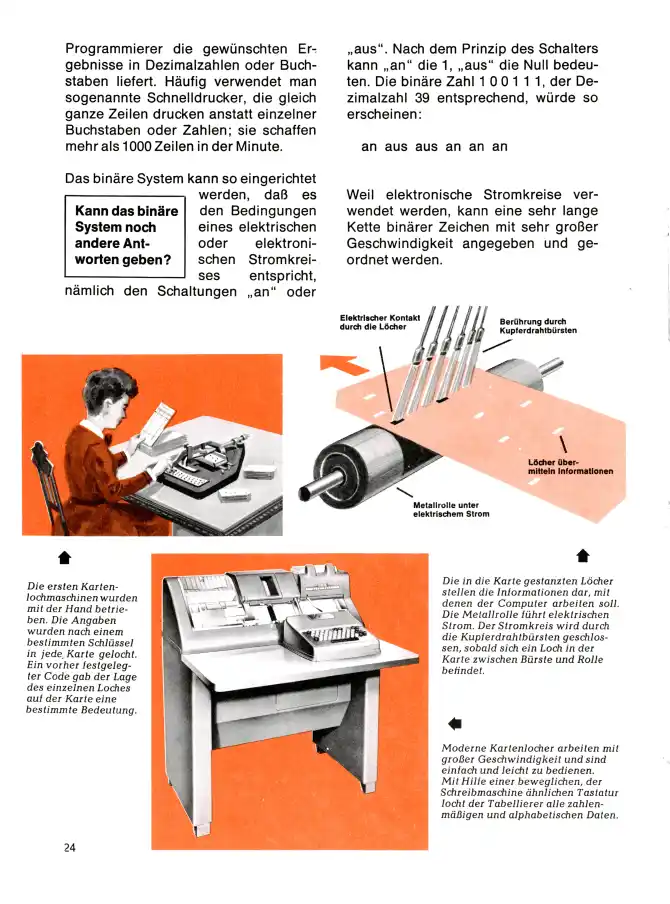
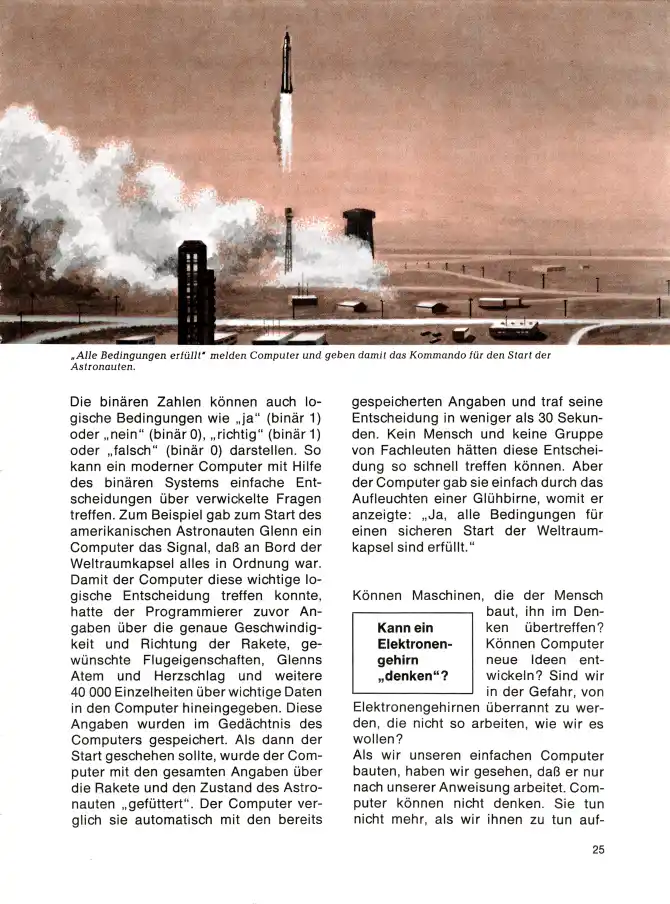
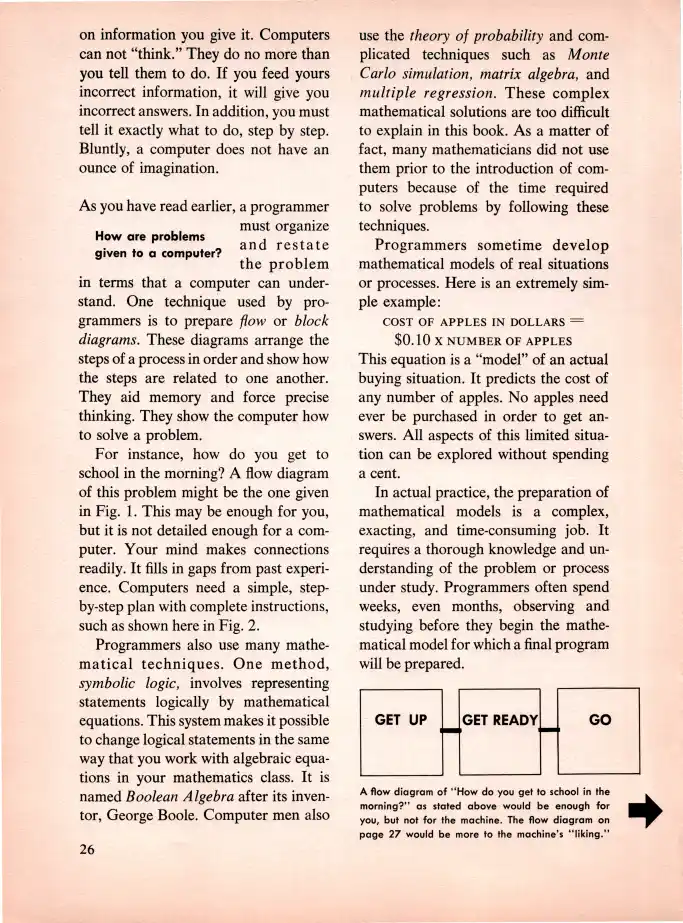
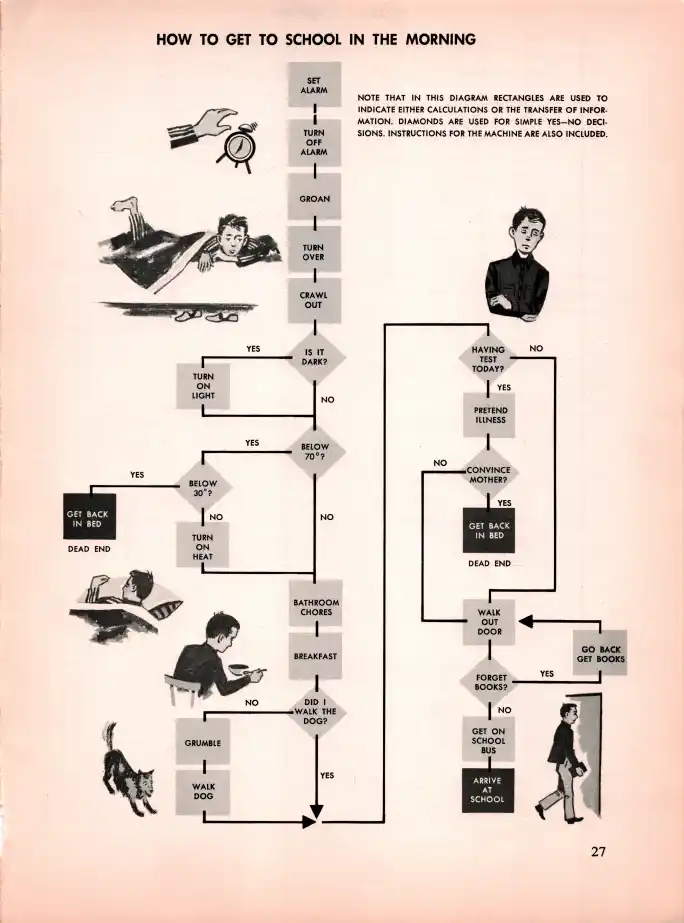
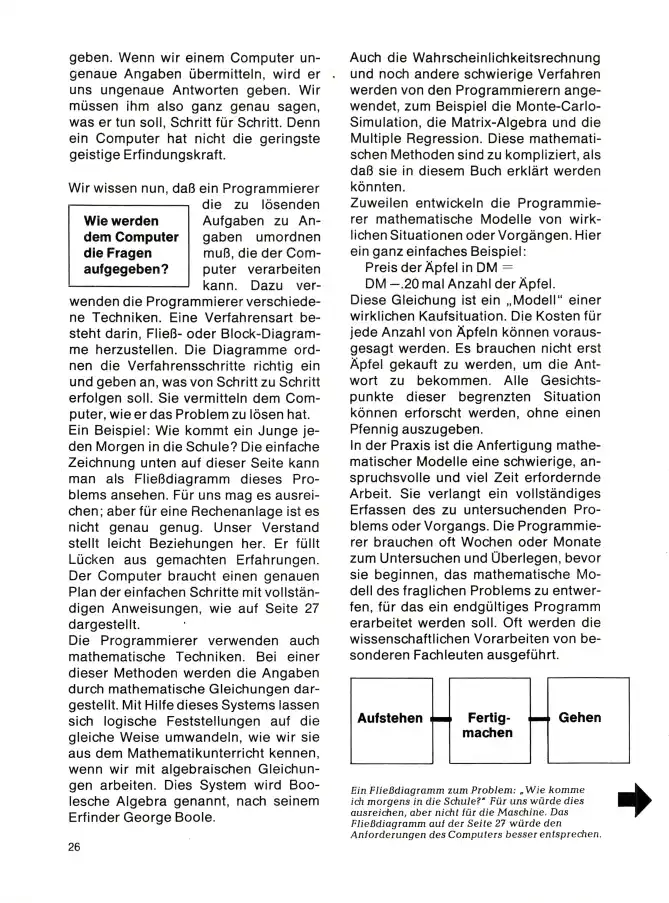
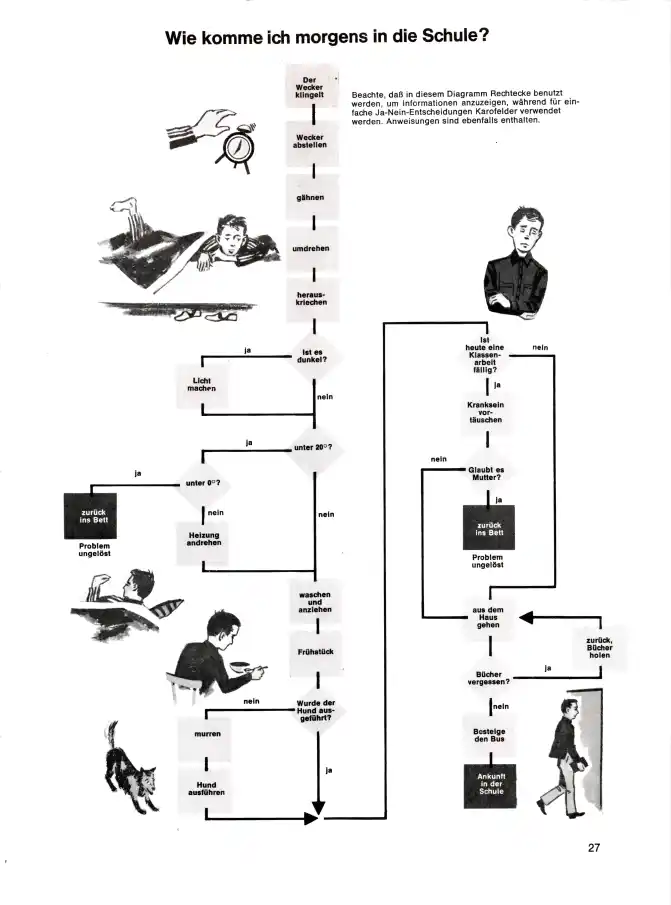
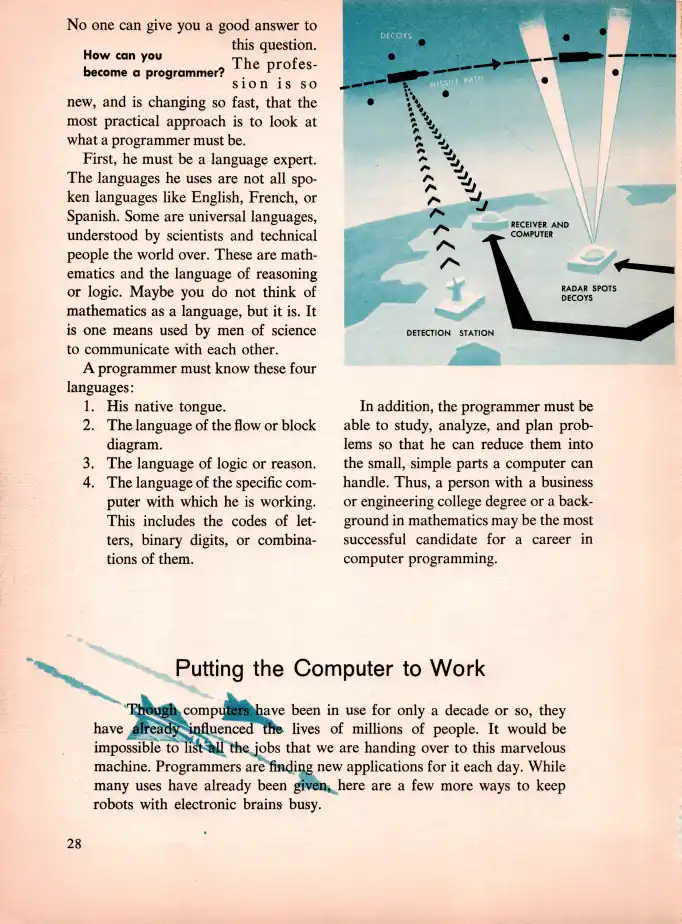
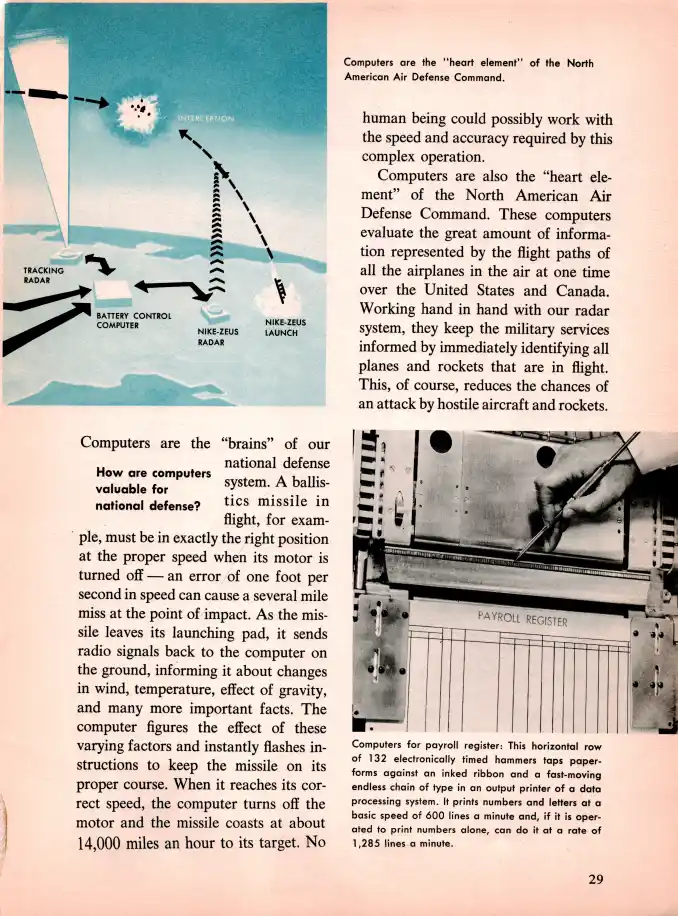
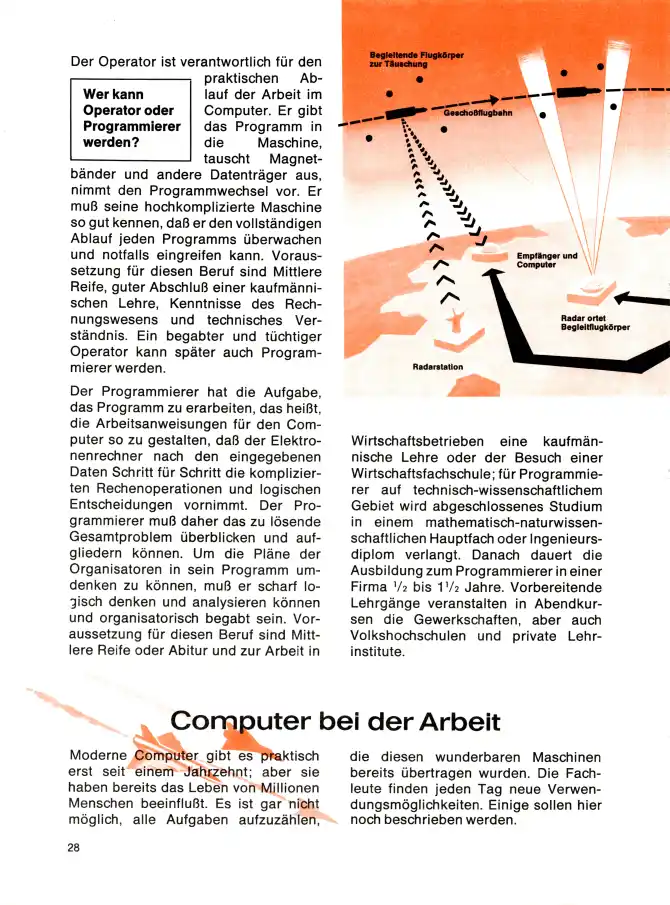
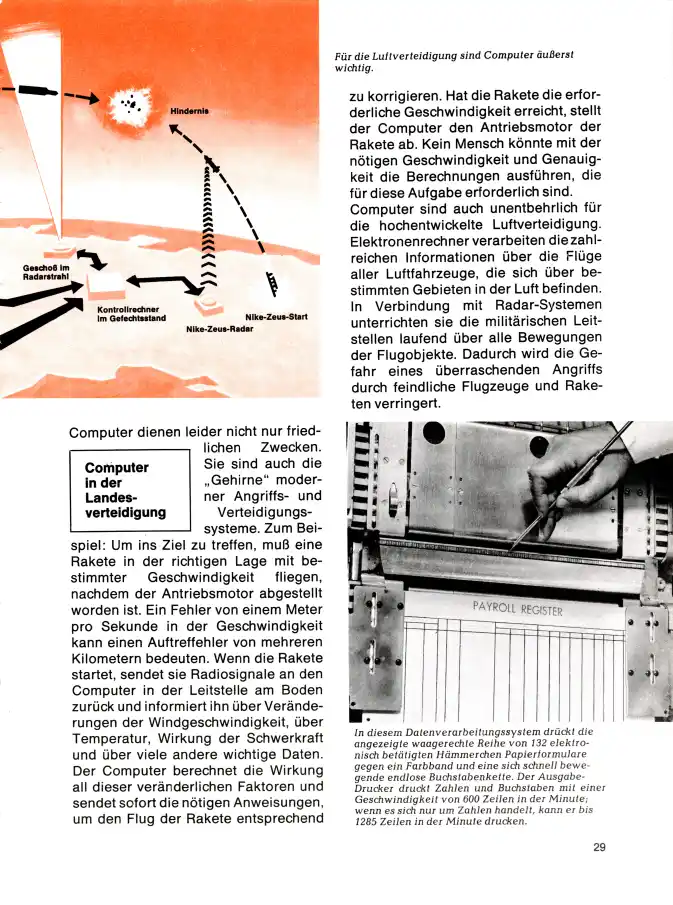
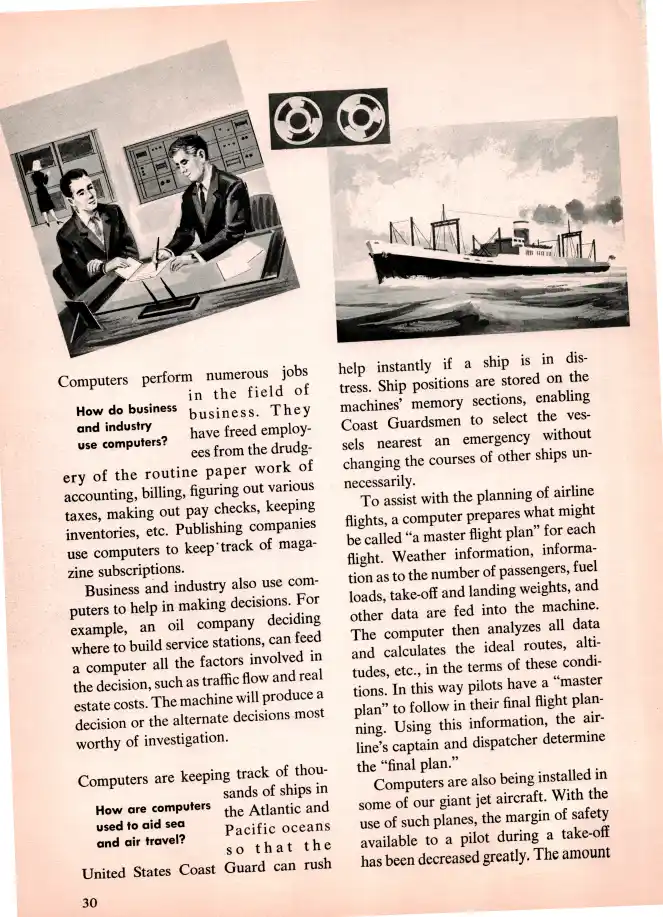
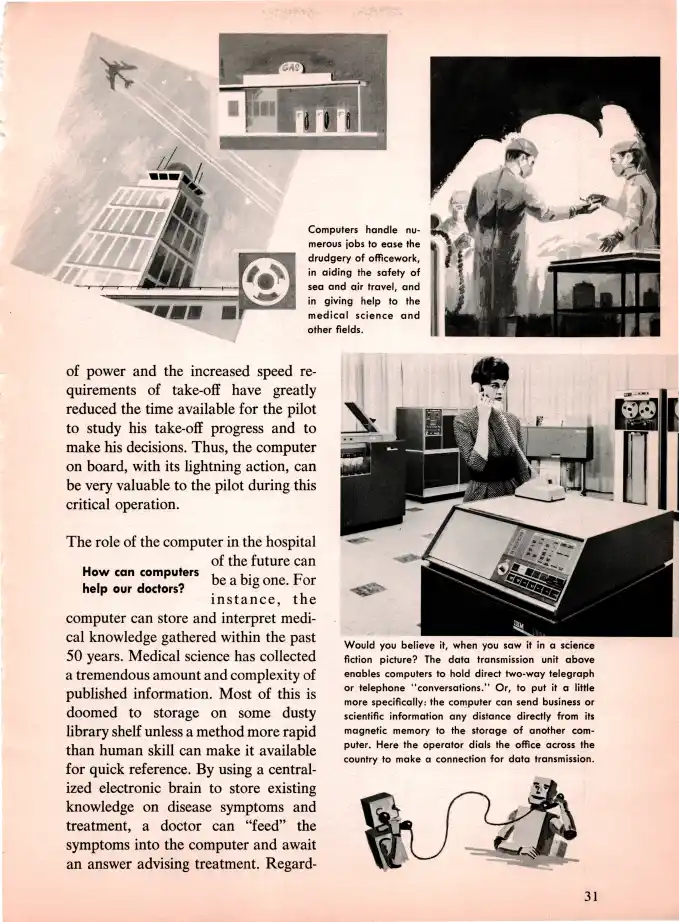
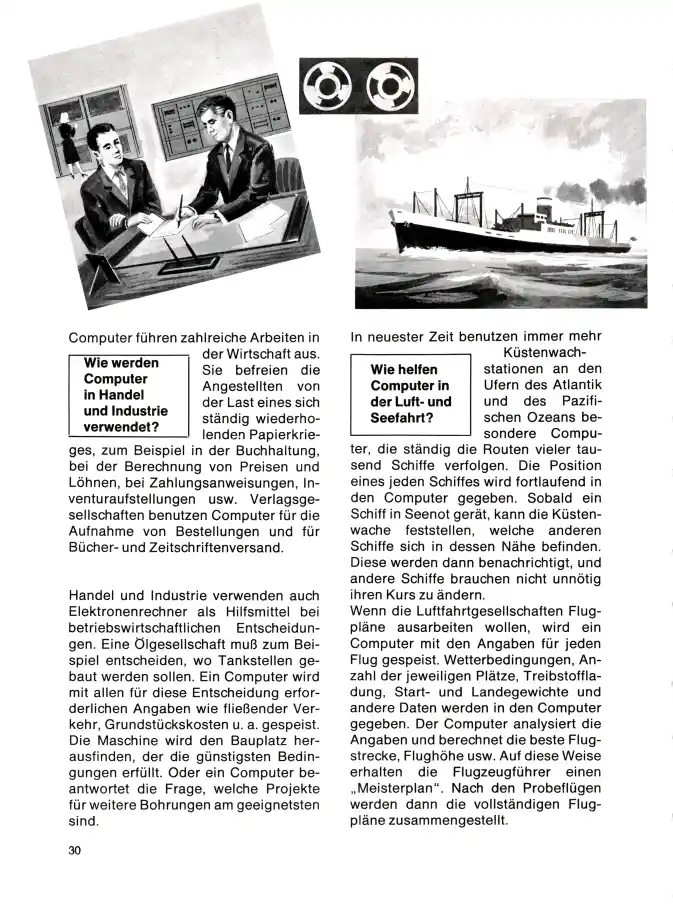
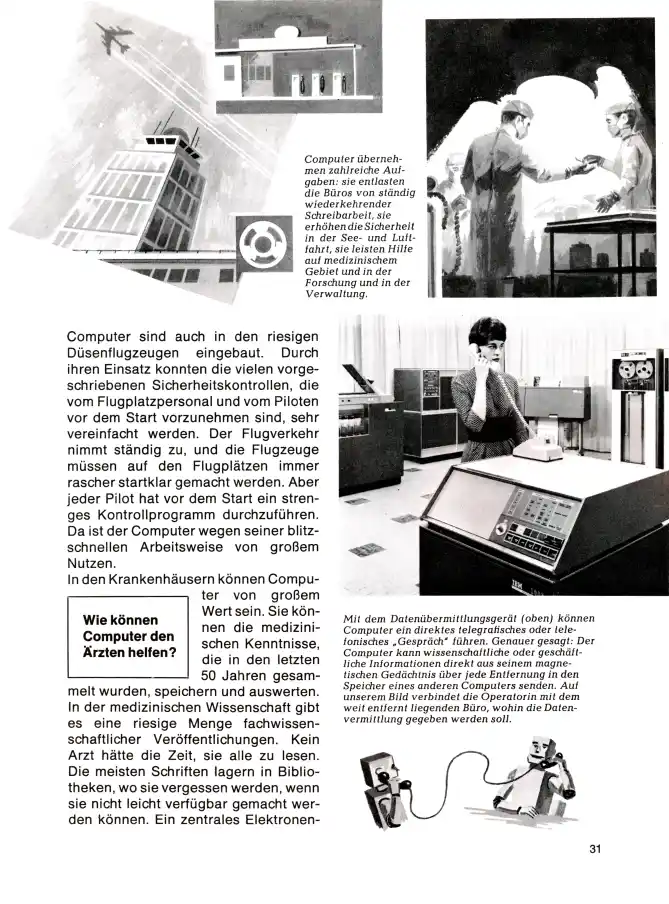
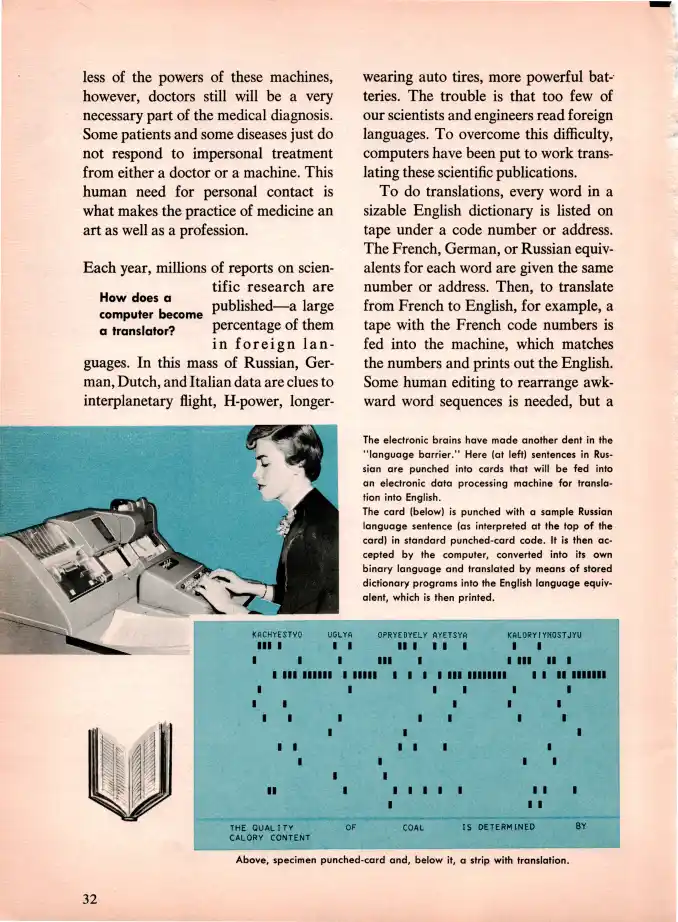
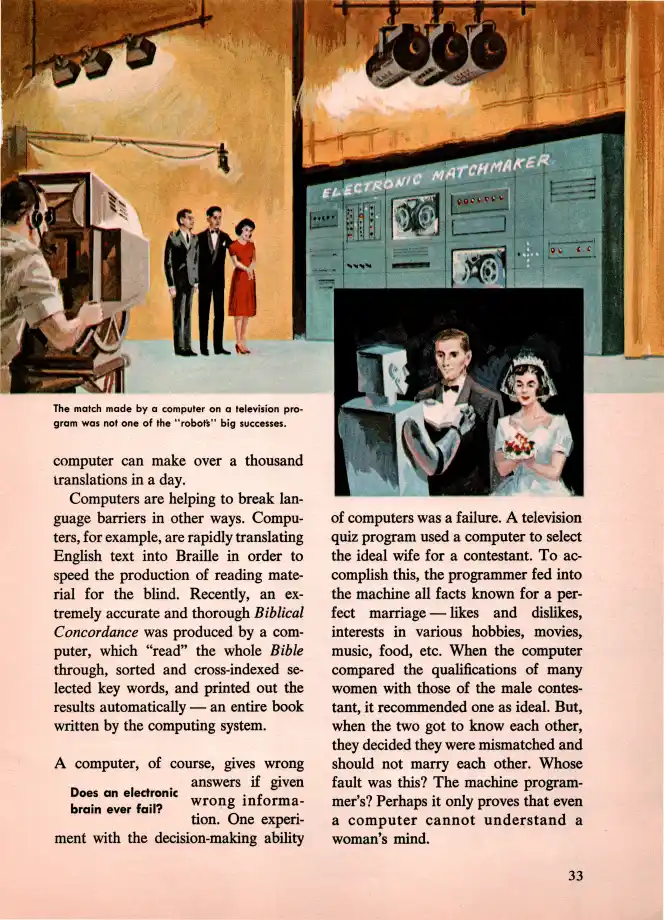
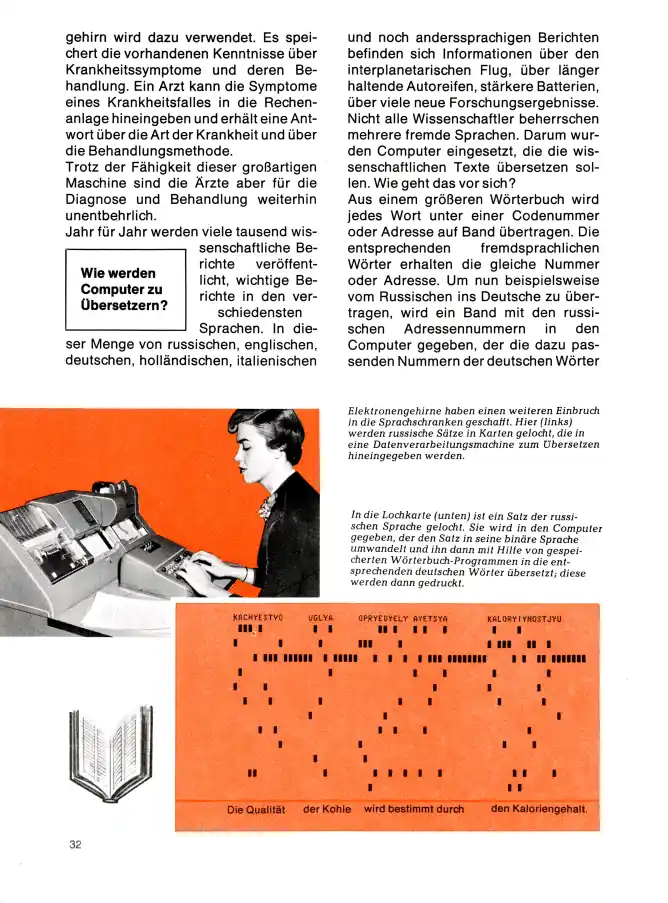
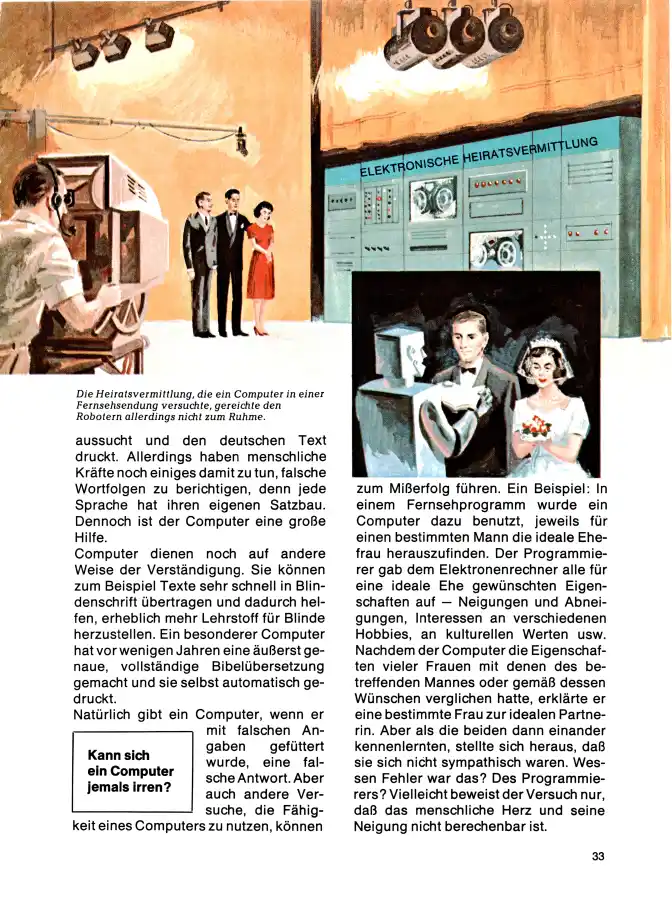
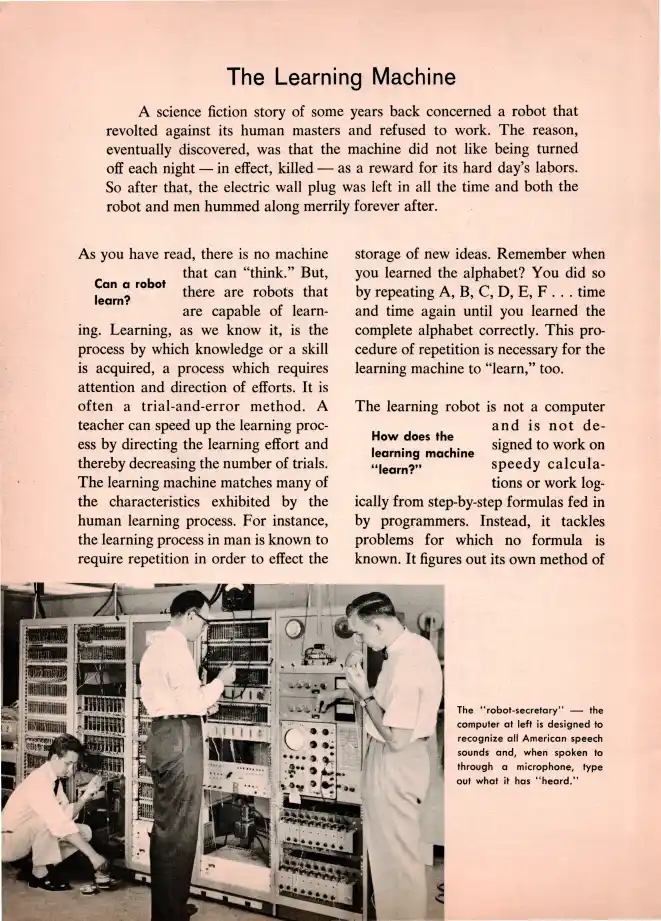
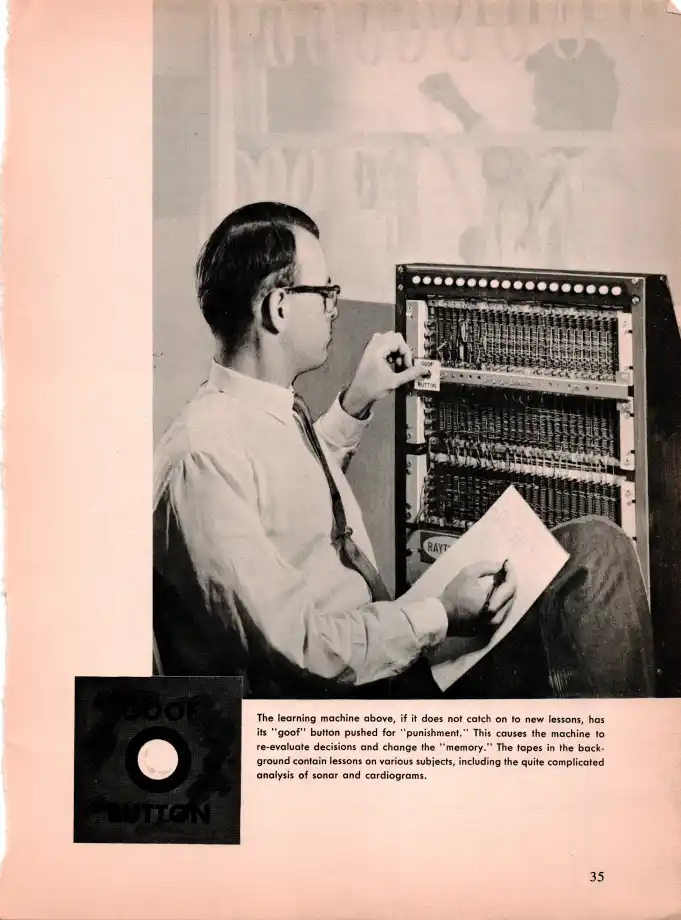
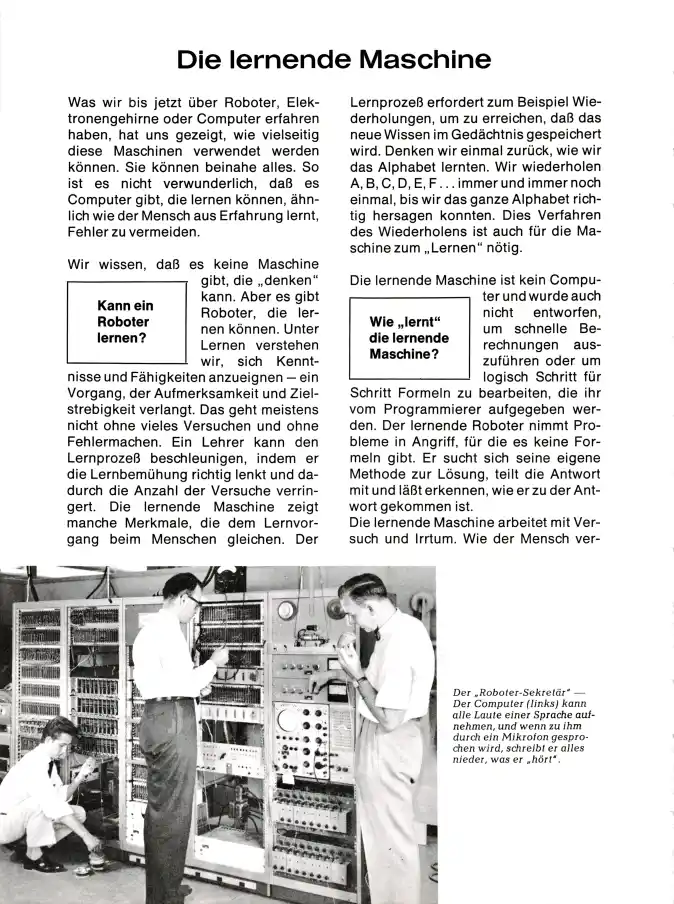
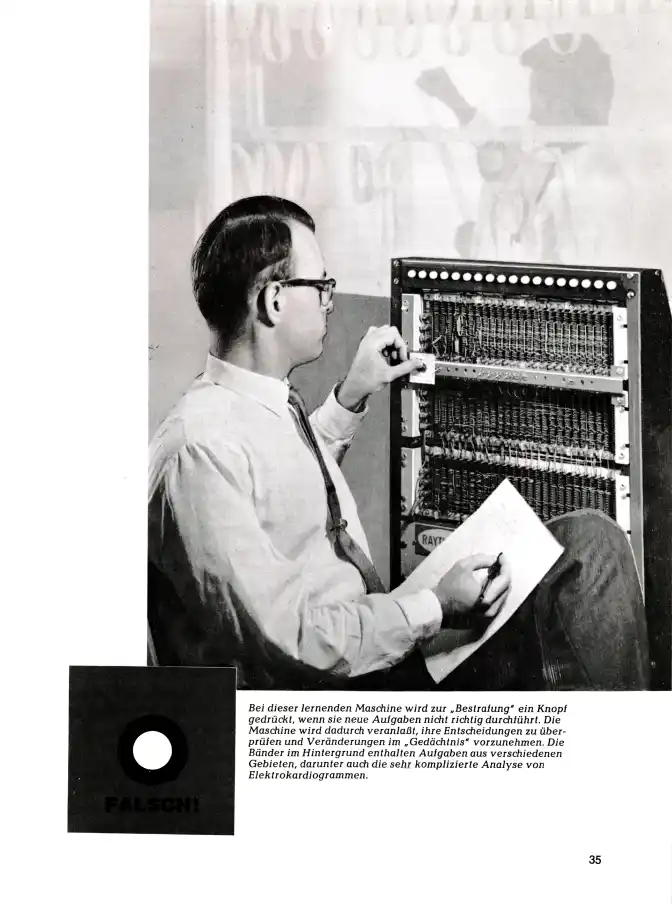
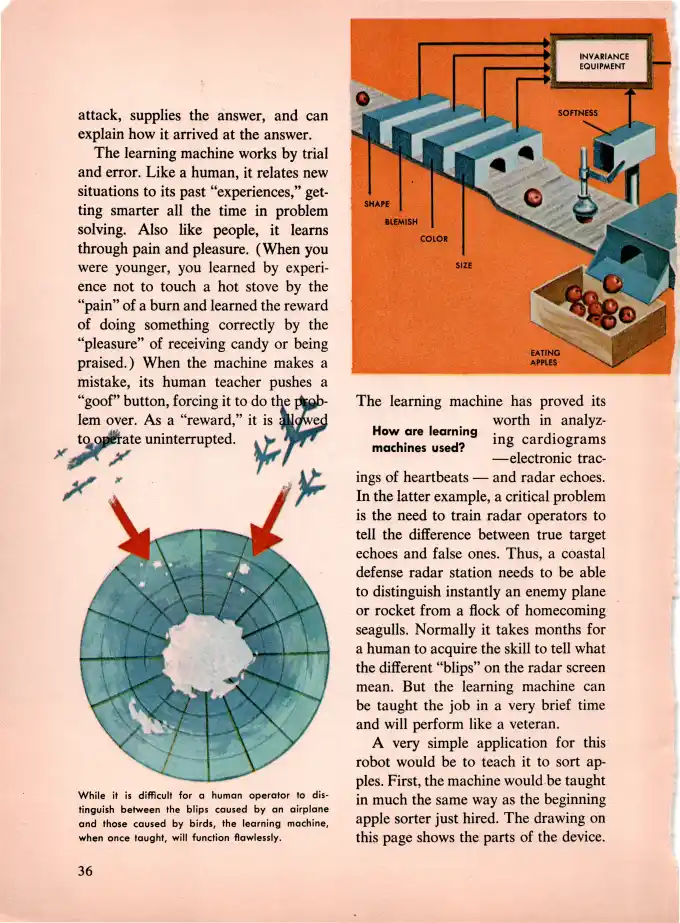
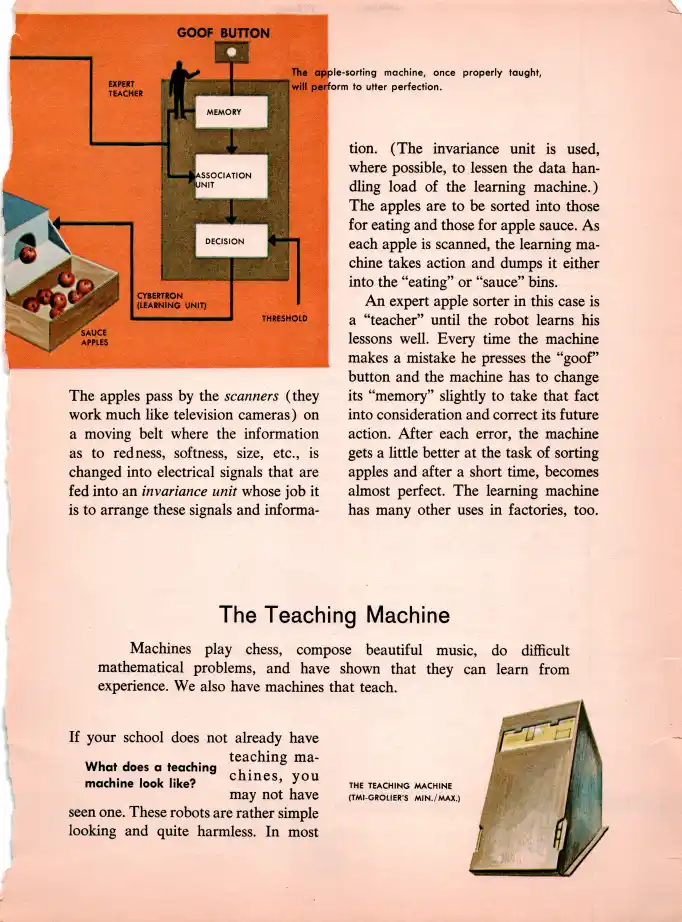
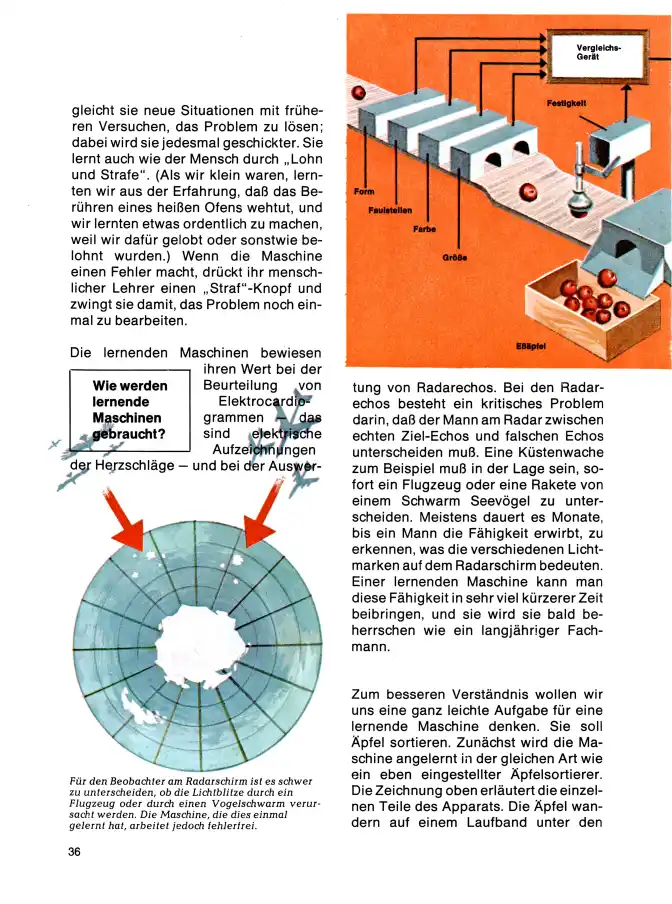
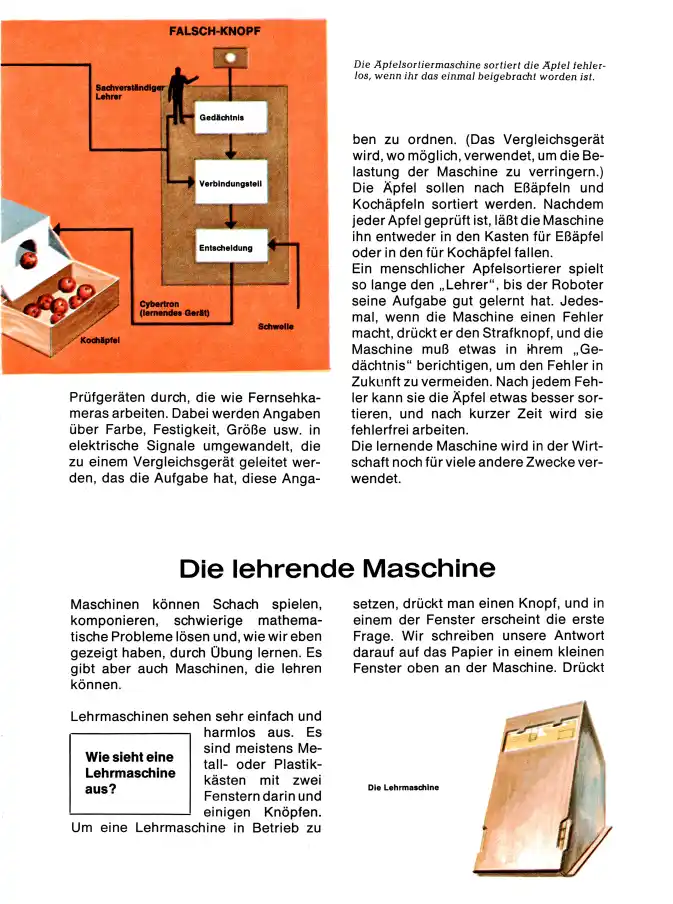
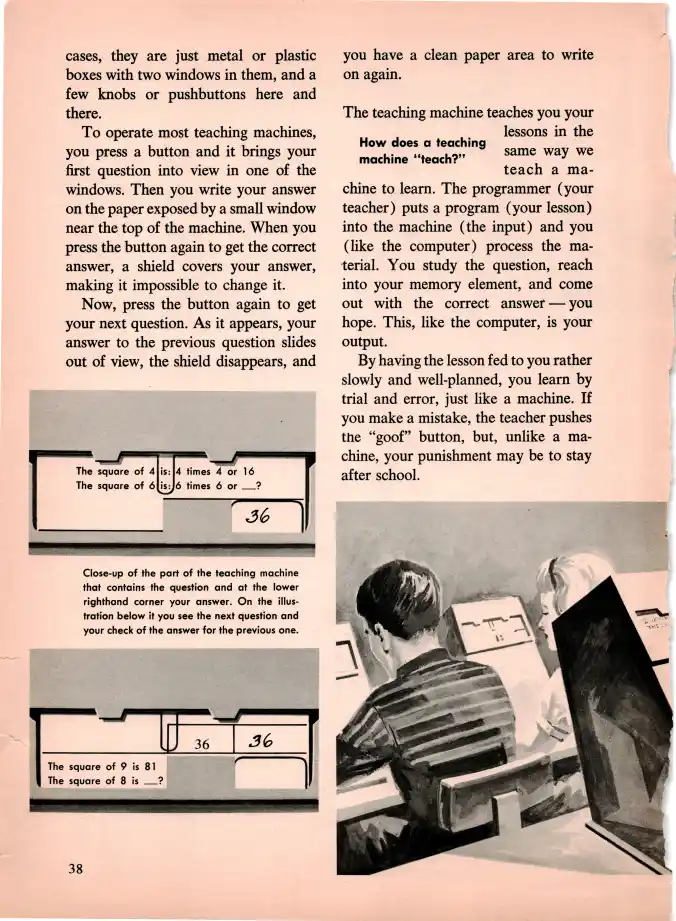
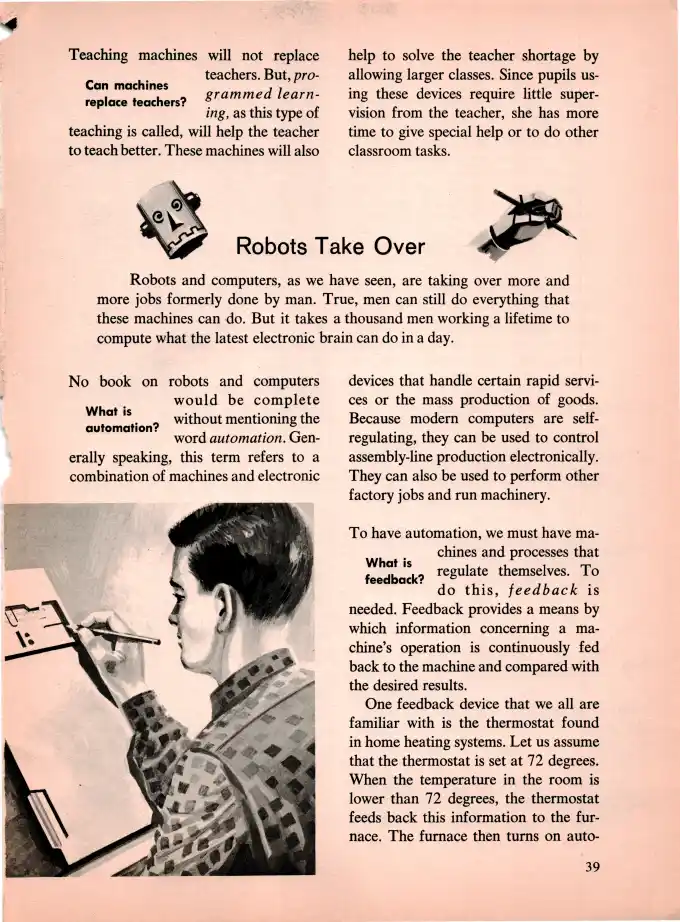
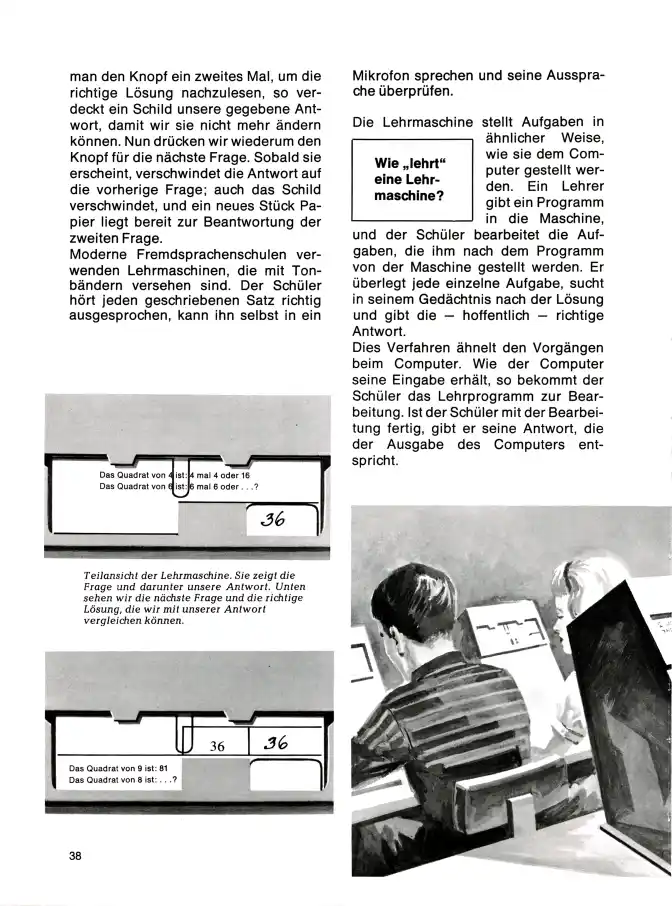
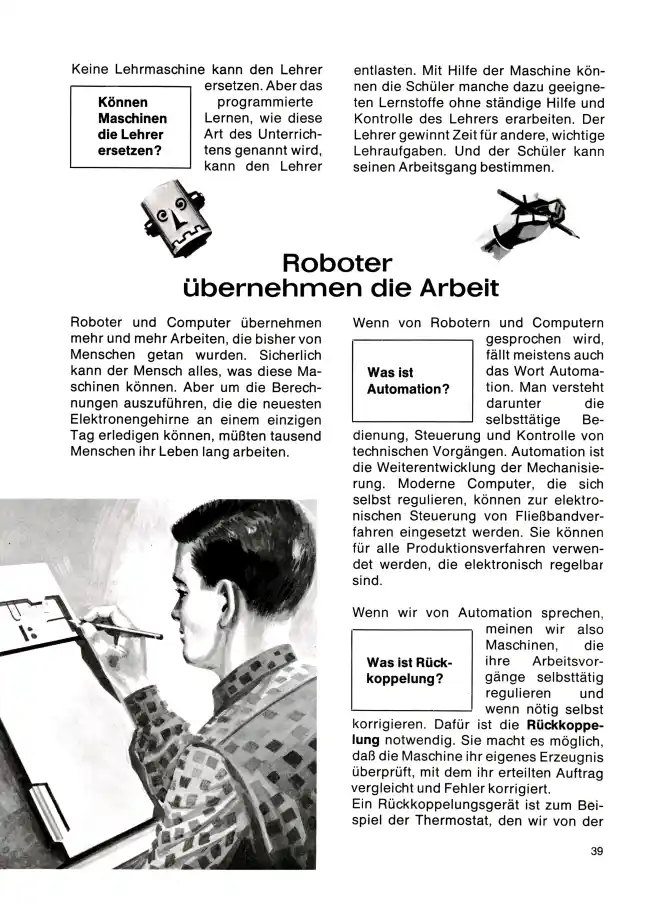

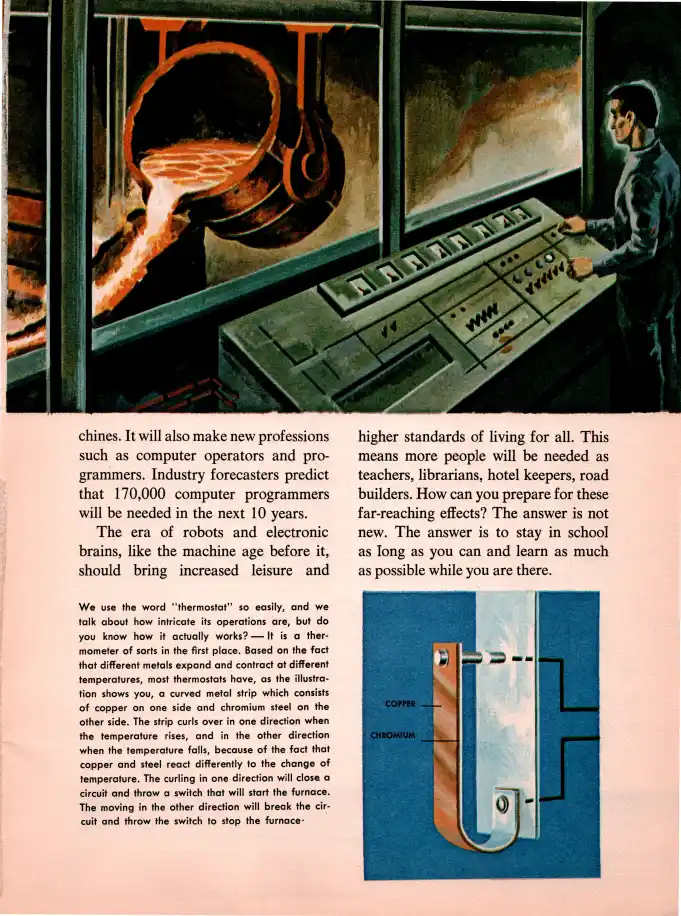

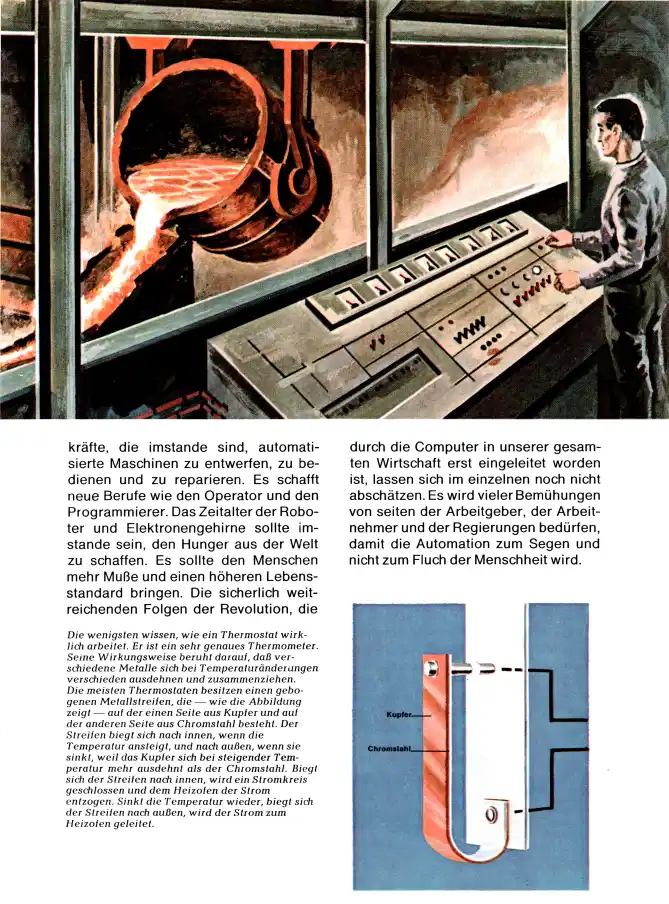
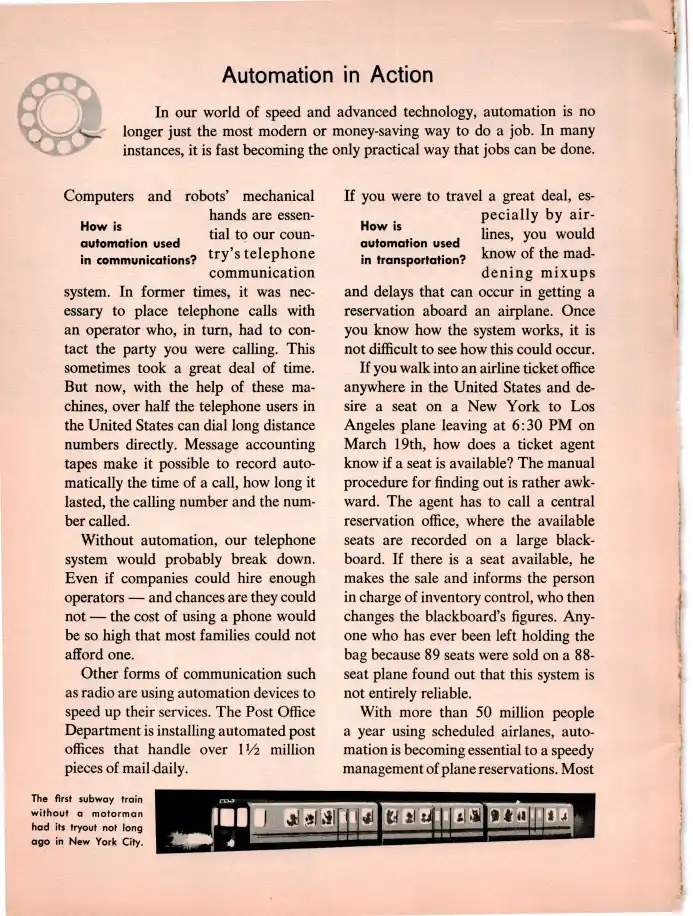
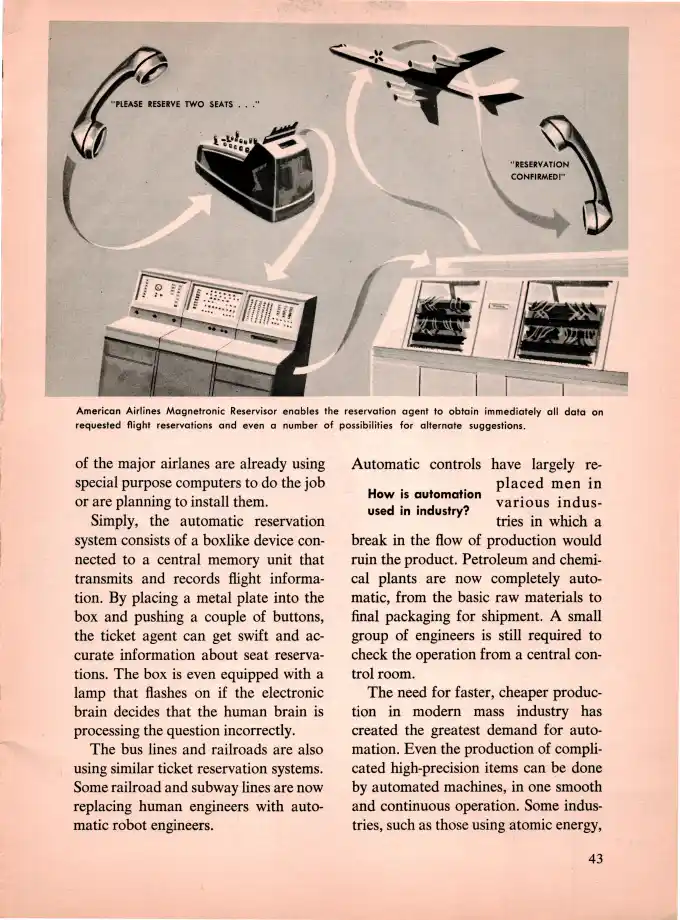
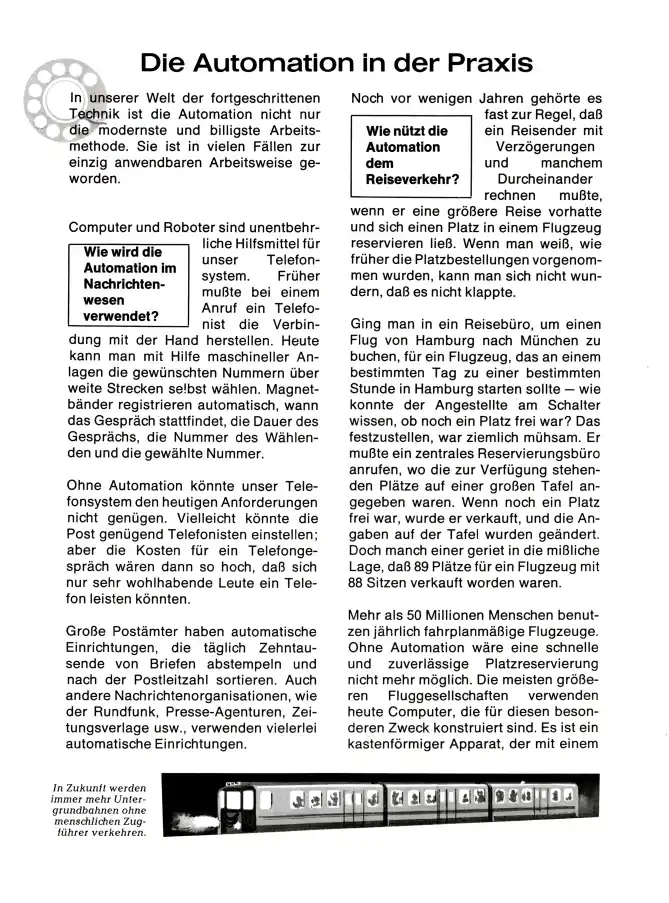
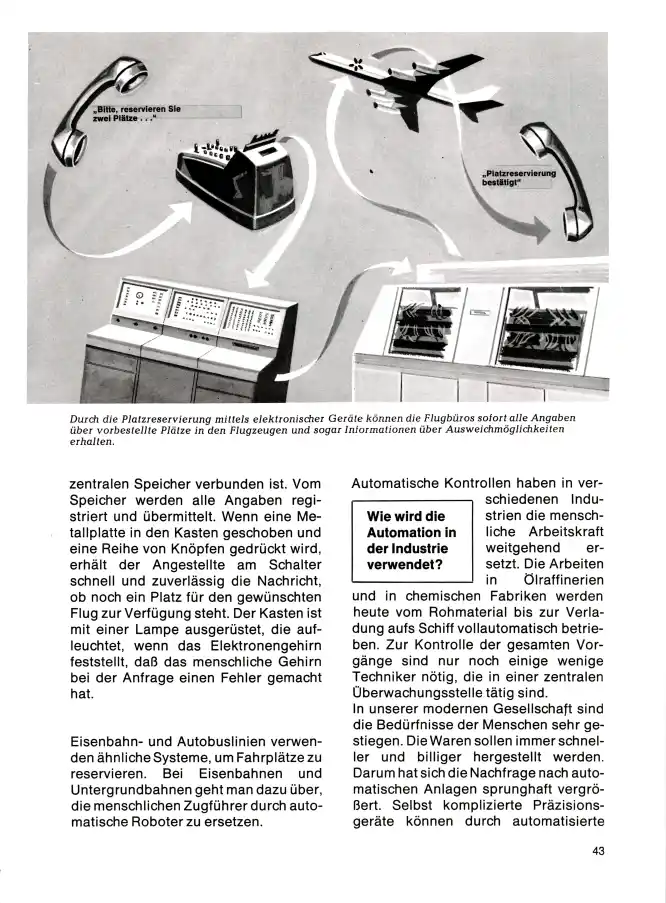
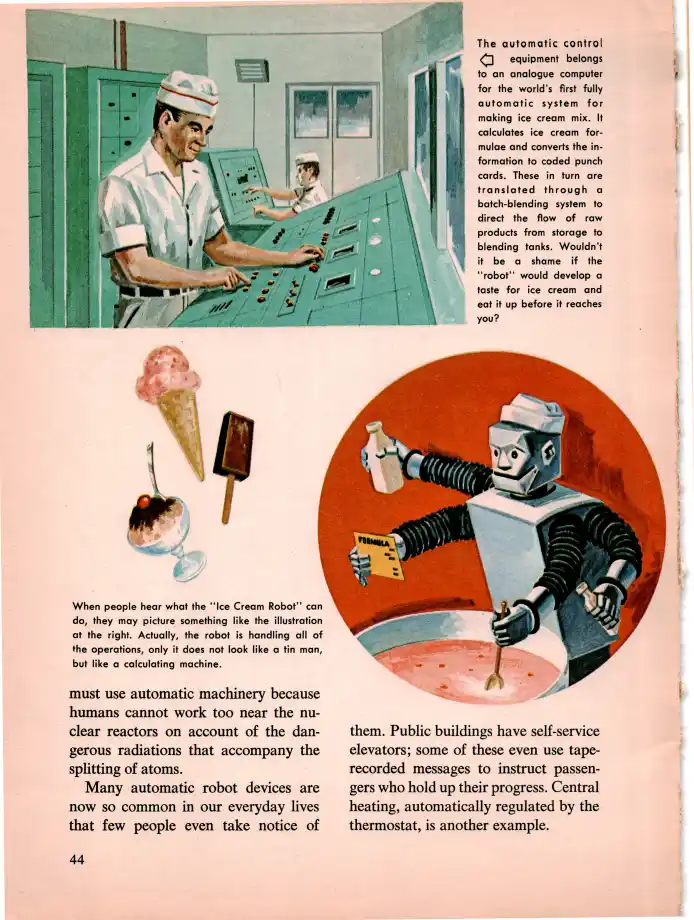
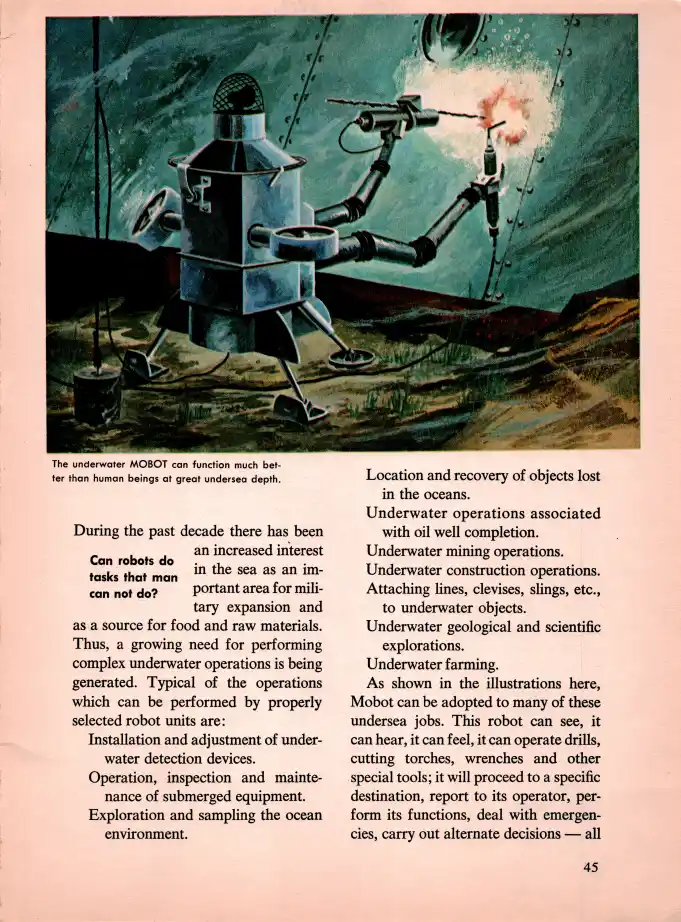
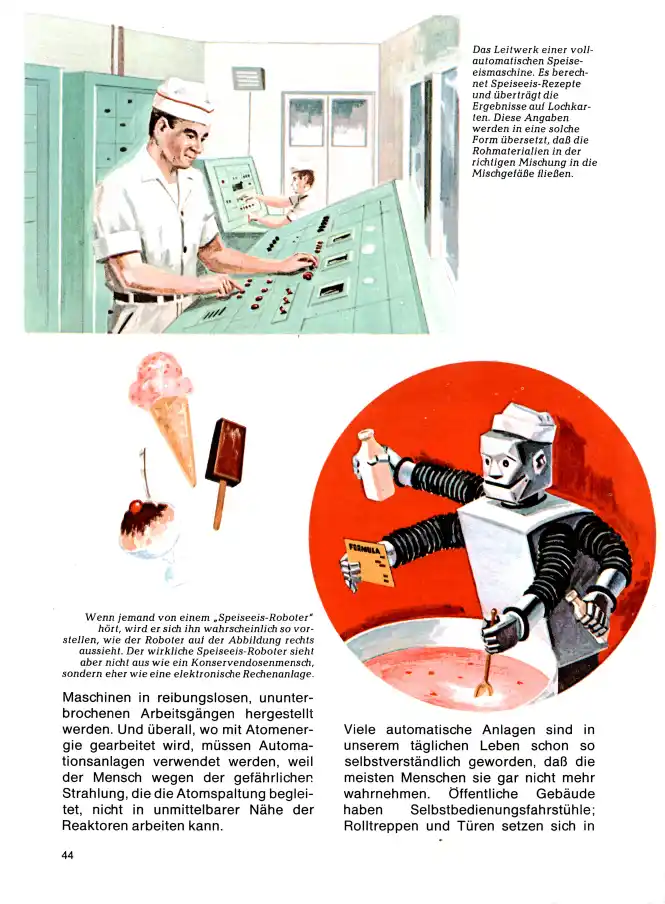
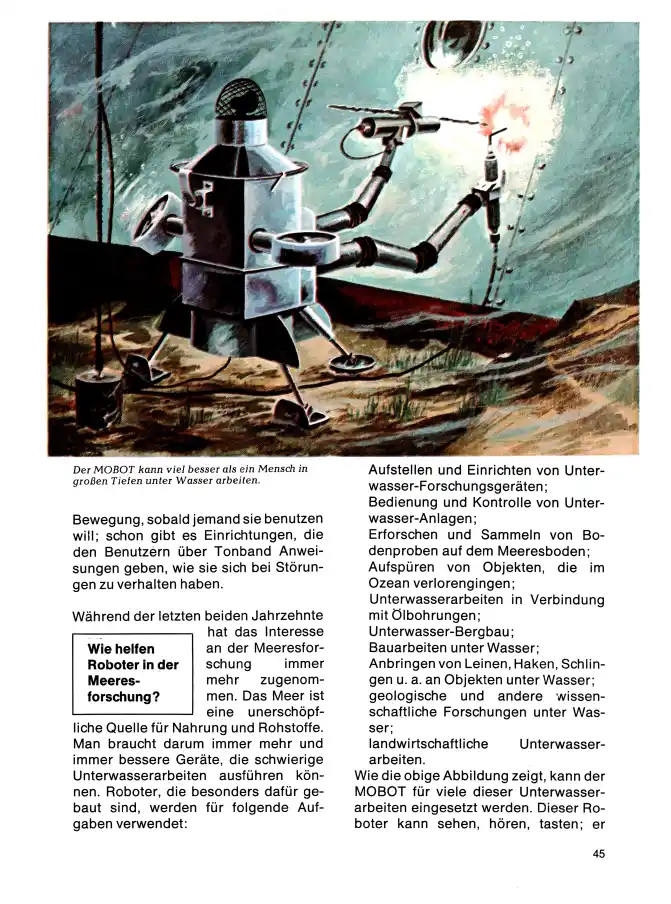
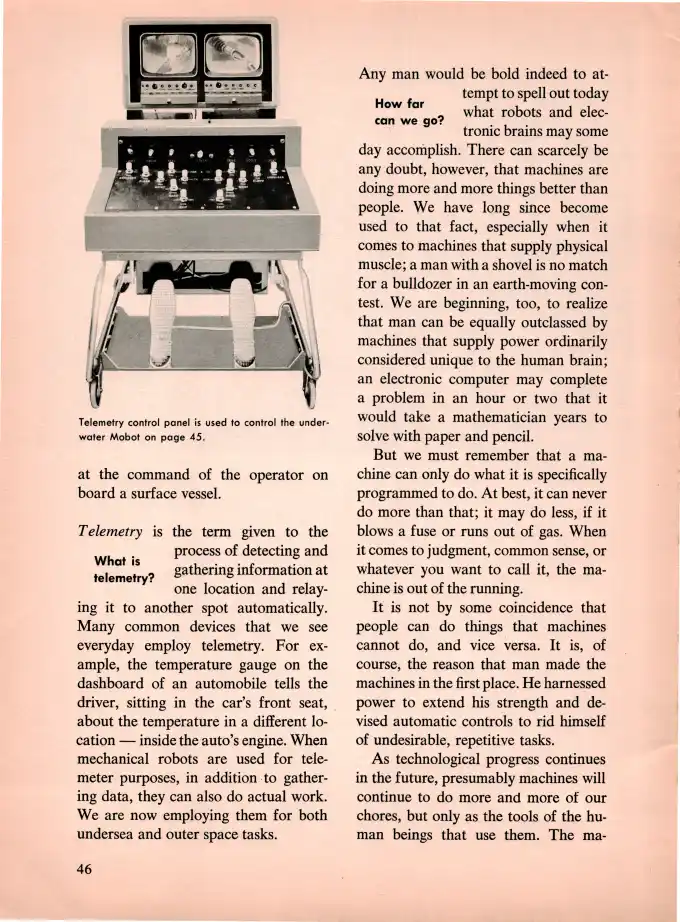
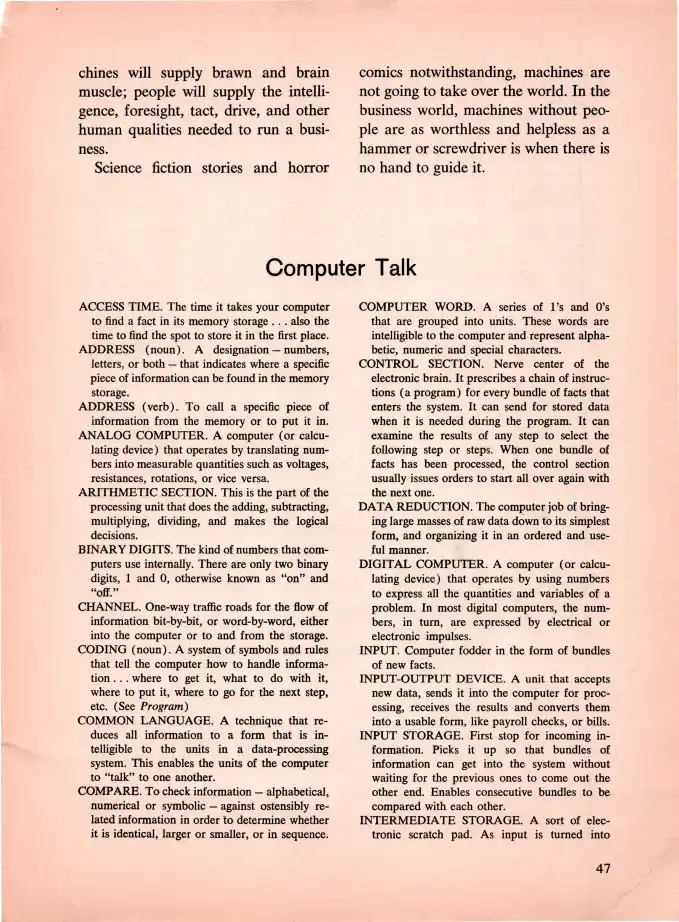
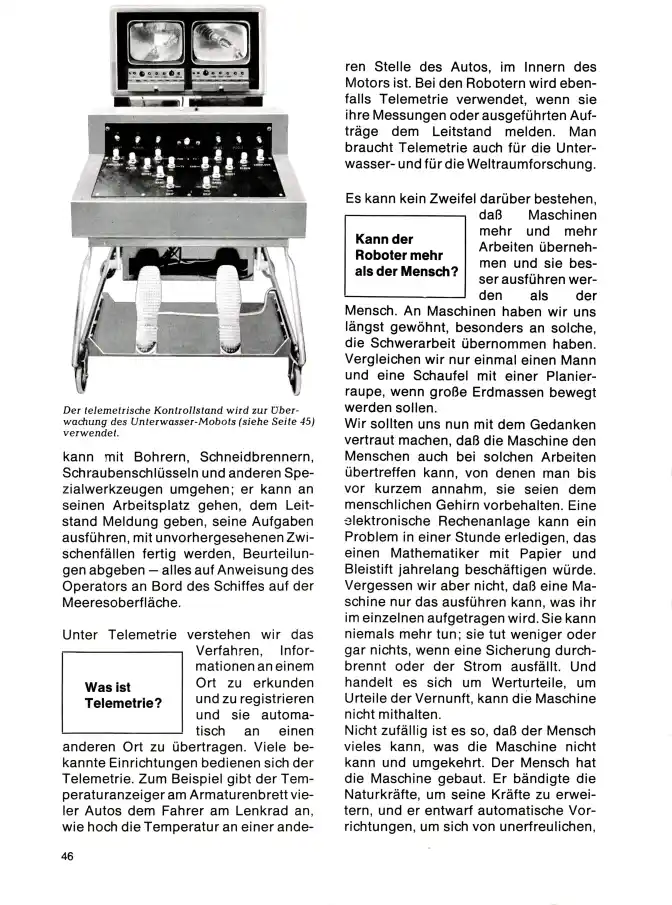
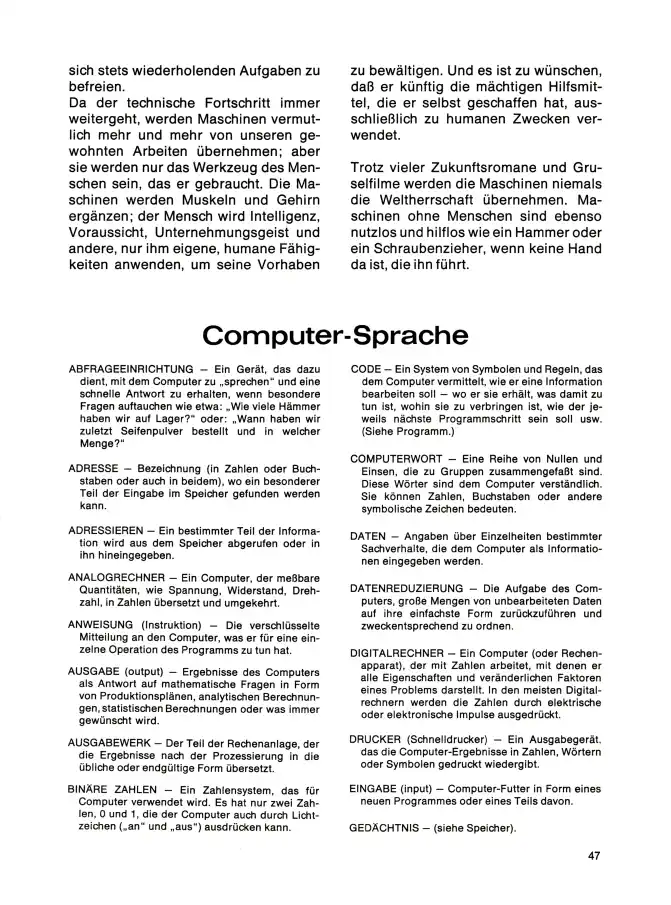
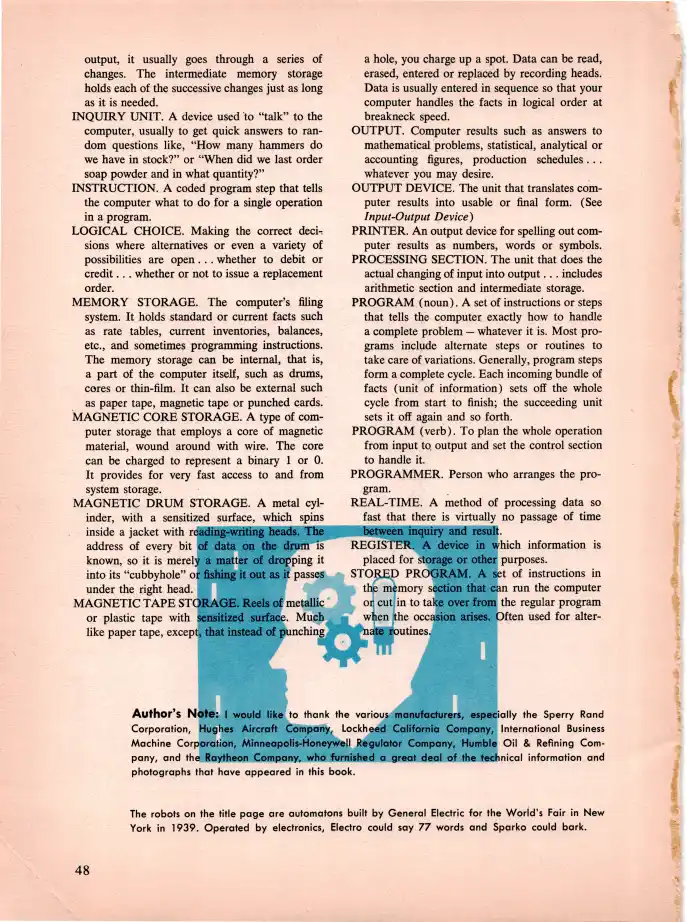
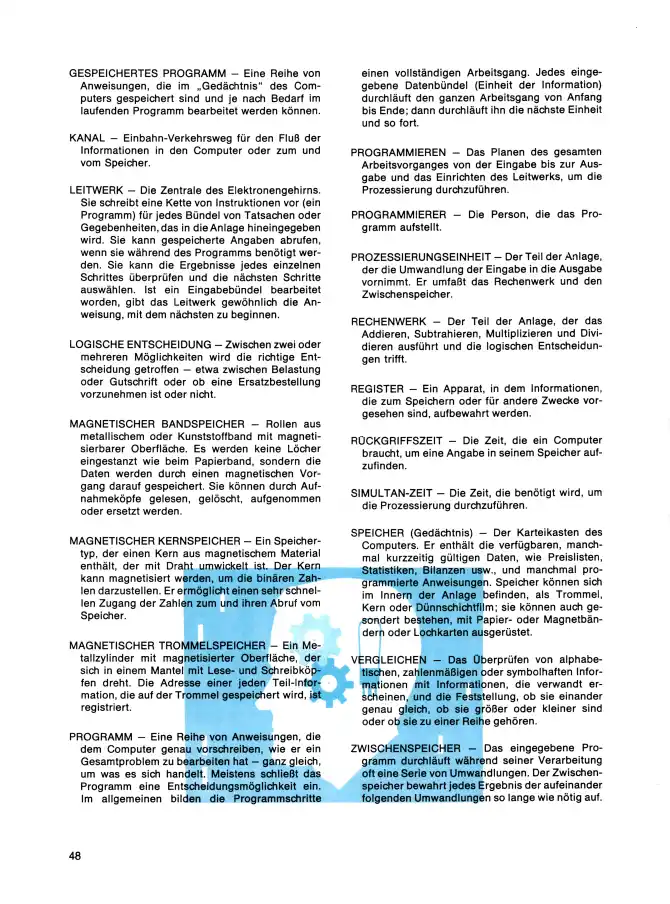
The robot dog on the cover page reminds me of a first generation Sony aibo…
Thanks for this post! Wasn‘t aware that „Was ist was“ / „How and why“ was that old.
I recently found „Was ist was – Multimedia“ from 1995 in my basement. It contained a CD with an interactive version of the book and was probably my first CD at all. Still remembering the morphing effect used to present the photos of the authors.
The book also presented a vision of future‘s class rooms, where all desks contain a desktop computer connected to a modem and a camcorder…
Excellent – I think this book might have been the one which set me off on my life’s obsession with computers and computing.
The Deutsches Wörterbuch (Neubearbeitung) notes that Computer, although attested in German since 1955, only began to replace Elektronengehirn (1952) and Elektronenrechner (1965!) as the common term in the 1960s. But it says of both that they are loan-translations of English forms: electronic brain and electronic computer.
There’s also a newer version of the German book. It, among other things, has some stills from StarWars and also was updated on Microcomputers.
Boy did this trigger some memories. I must have had a copy of this book, or one of my friends did. So many of the pages are familiar. I was only six years old when it was published, so I probably saw is some years later, perhaps in the school library. Thanks for publishing this wonderful write up and giving me a trip down memory lane.